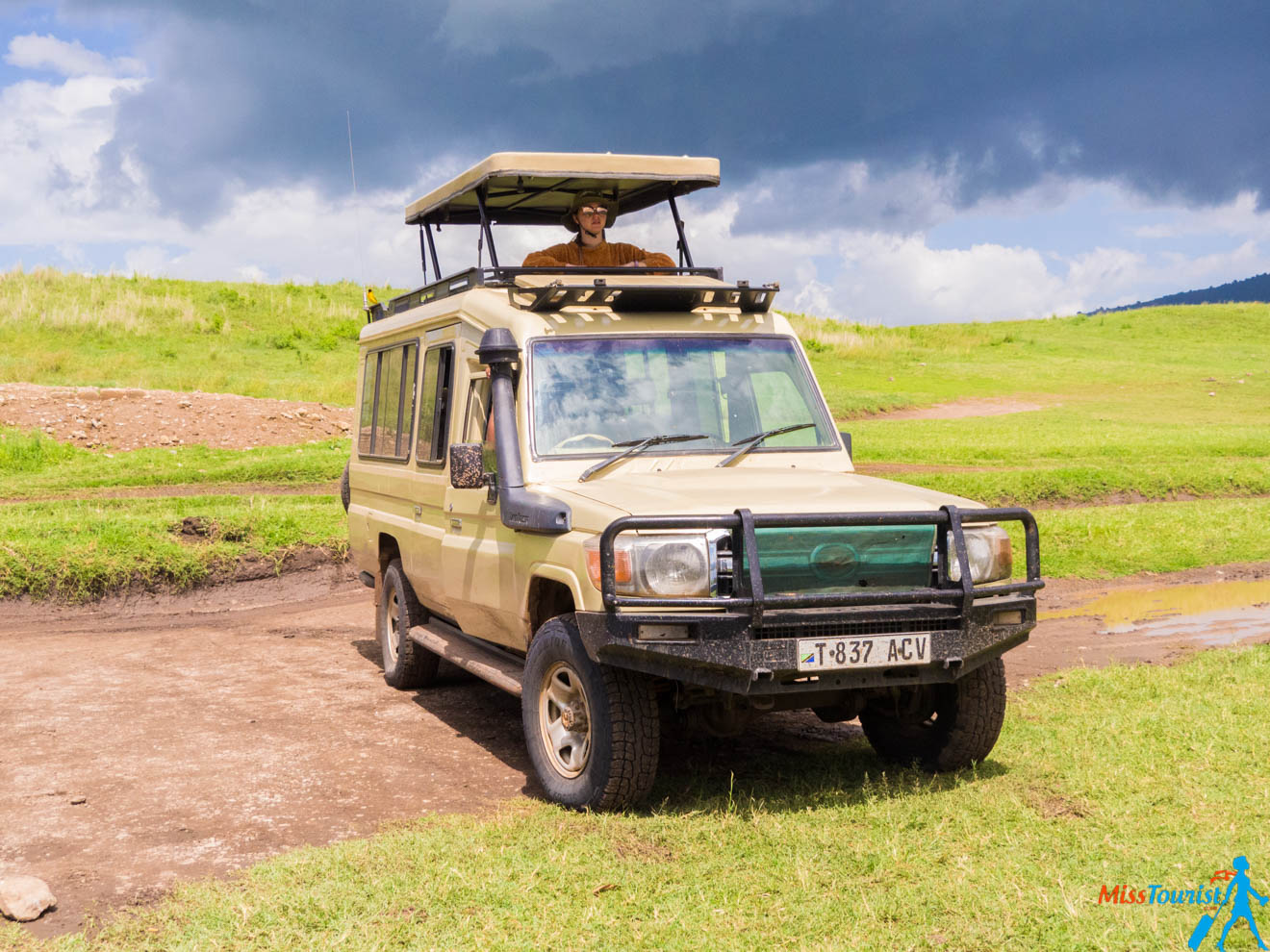
Hi there traveler! Interested in taking a safari, possibly in Tanzania? First of all, you are going to have one great trip – a safari is an awesome idea!
A safari, also known as a “game drive,” is an amazing opportunity to see wildlife up close, not in a zoo, but in their natural habitat!
Below in this post we are going to talk about the prices of safaris – I will give cost estimates for everything from budget safaris to luxury safaris, as well as the ideal length of a safari. You will also learn everything from how and when to see The Great Migration to where to spot The Big 5, when the best time to visit is and which national park to go to. I will also give you some itinerary ideas that are suitable for couples, adventurous travelers, honeymooners or anyone looking for an unforgettable experience!
Ready? Let’s get to it!
Here is everything you need to know about organizing a safari in Tanzania:
Contents
- Why a safari in Tanzania?
- 1. How much is it going to cost?
- 2. How to choose the best safari tour operator
- 3. How to choose the best itinerary for your safari
- 4. When to go for a safari in Tanzania
- 5. What do I need to pack for a safari?
- 6. What if I don’t see ANY animals on my safari?
- 7. Can I organize a self-drive safari without the use of a tour operator?
- BONUS – My experience – 3-day safari itinerary
- Other practical information about Tanzanian Safaris
- Conclusion
Why a safari in Tanzania?
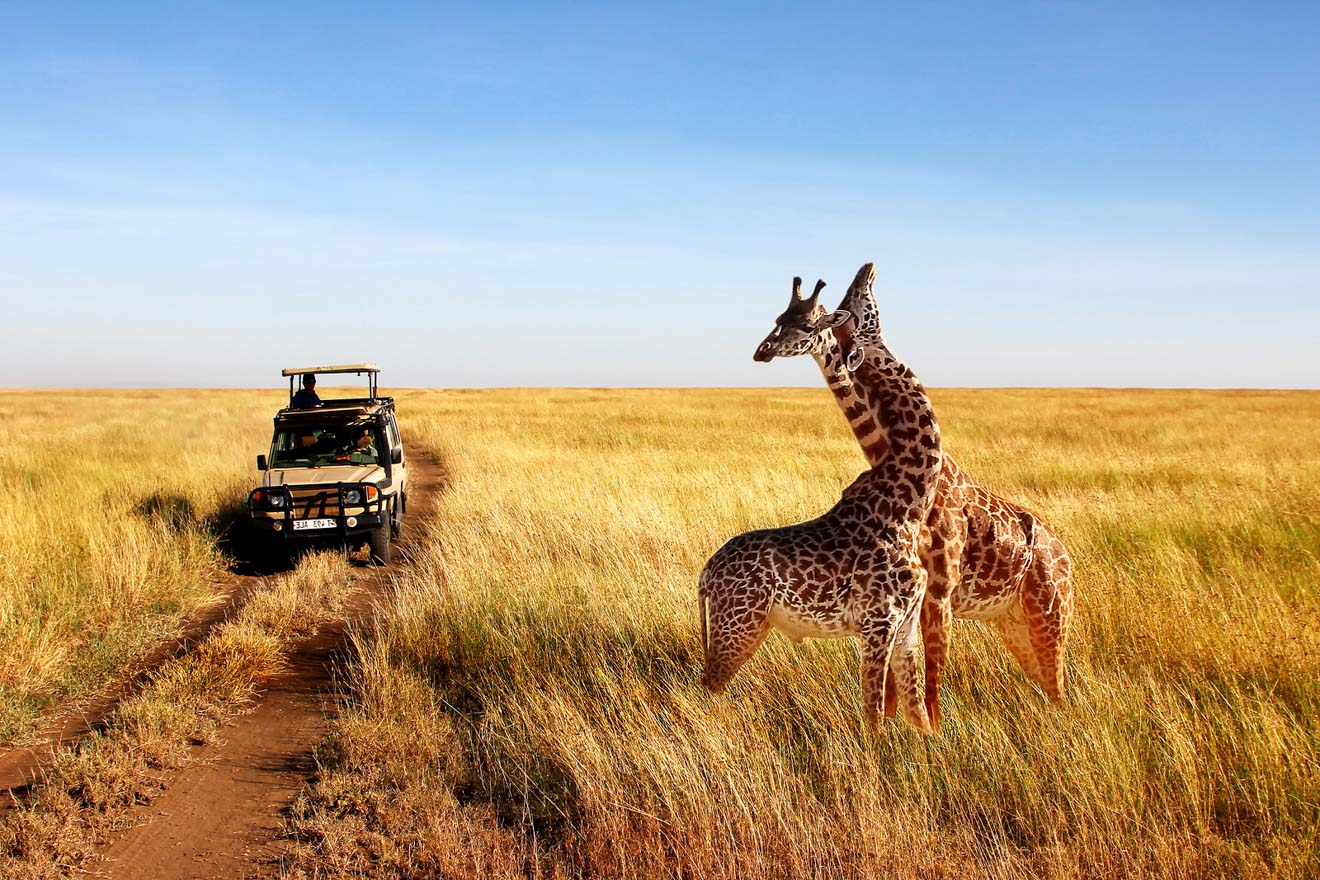
If you are looking for other options, let me tell you why I think Tanzania deserves your attention:
Compared to other African countries, Tanzania is more affordable and less crowded.
Tanzania is a country where you can witness the Great Wildebeest Migration almost any time of the year, and, what’s more, you can combine your safari with a great beach getaway there! What’s more, if you are feeling adventurous, you can top it off with a Kilimanjaro hike! I did it myself; you can read all about my experience conquering the roof of Africa here!
In fact, my 3-week trip in Tanzania ended up being one of the most perfectly planned vacations of them all because it had separate active, learning and relaxing parts to it, all together in one trip! You can see my suggested day-by-day itinerary of Tanzania here.
Here are 7 things you need to know about an African safari in order to plan a perfect vacation:
1. How much is it going to cost?
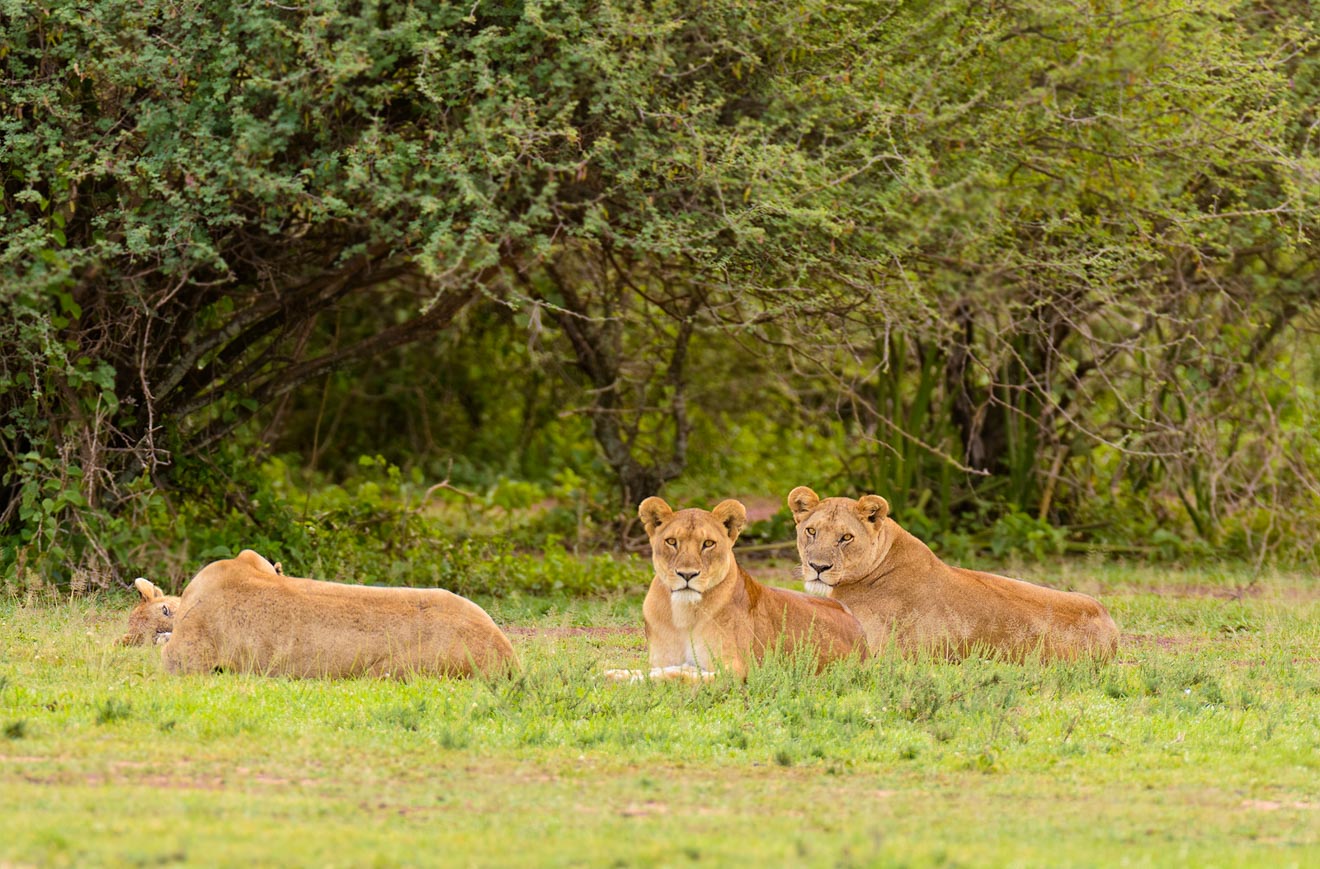
Safaris are expensive, I think you know that by now. Here is the reason why:
The regulations have recently changed and now the Tanzanian government charges an arm and a leg for entrance fees to their national parks (please see the pictures of pricing I took at the entrance to Serengeti and Ngorongoro below). This is the main reason it is so expensive. Plus, the price for a relatively simple accommodation somewhere in the middle of nowhere in Tanzania can easily cost the same as a good 4 or 5-star hotel somewhere in New York or Sydney. You will also have an actual safari cost on top of that (the jeep with the guide) and the tips for the guide afterwards.
(Usually, everything is included in the cost except for the tips, but I will break it down so that you know why it is expensive).
Your price will heavily depend on the following 3 factors:
- Is it a private safari or are you doing it with a group?
- Are you going to stay in hotels or tents overnight?
- How long is your safari going to be?
MY EXPERIENCE:
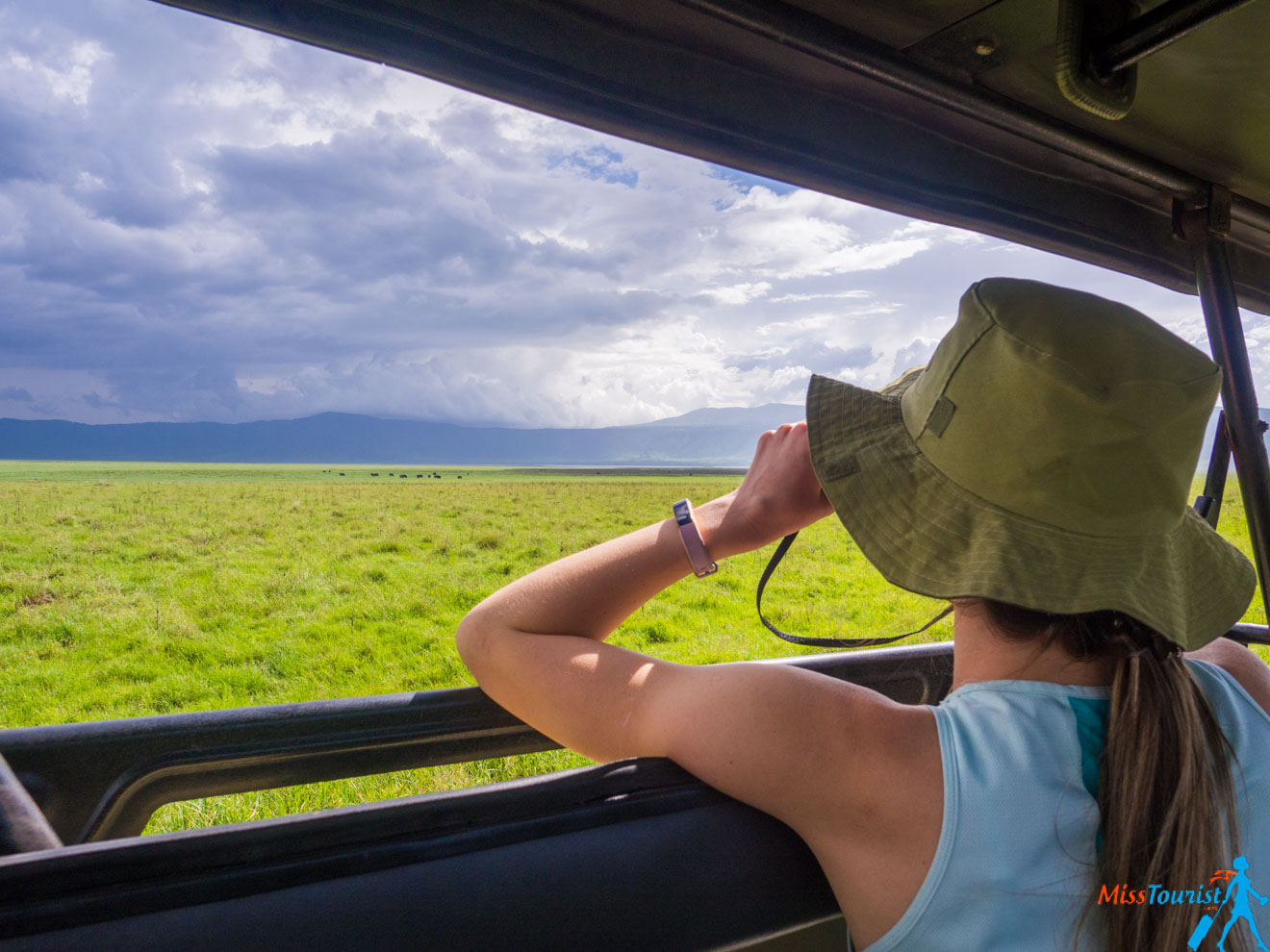
I opted for a private safari and had no regrets! The company I recommend is called Altezza (more on them and a special readers’ discount is below in this post).
True, private safaris are more expensive, but we were flexible with the driving, could go whenever we wished, could stay as long as we wanted in one spot, there was no need to fight with others for a perfect picture spot and so on. If you have a chance, or, even better, if you are traveling as a group already, I would suggest taking a private safari. Needless to say, the group safari is obviously less expensive. If you are a solo traveler, it might be a good idea to join a small group safari for more fun!
As for the accommodations, after Kilimanjaro and sleeping in tents in the cold for the previous 7 days, I was sure I didn’t want tents anymore!
I needed my bed and a shower, so we searched for a lodge option.
I will talk about the duration of the safari later, but let me just tell you that I was quite limited with time and my safari was 3 days.

Below are sample average safari prices (for simplicity, a 5-day safari is being compared):
1) Luxury Safari – a luxury accommodation with a private pool and splurge for a hot air balloon ride. The price REALLY depends on the tour and what is included. A very average estimate would be about US $4000 per person if you are two people traveling, and US $3200 per person for a group of 4.
2) Middle price range – You will stay in good tented lodges, partly luxury, partly mid-priced, nicely decorated, clean and spacious. The price is about US $2000 USD per person with a private driver and about US $1500 per person if you join a group.
Please refer to the BONUS section where I describe my own experience taking what I would describe as a “middle price range safari”. It was US $1200 per person for 3 days, but we had a private driver. Otherwise it would have been cheaper (the day-by-day itinerary with timing, pictures etc is below in this post!)
3) Budget style safari – you will sleep in tents and have food prepared for you by a cook who will travel together with you in the jeep. You will share the jeep with other tourists. The approximate price for a budget safari for 5 days is about US $1000 per person.

NOTE 1: It might be about 20% cheaper if you book it at their location. Usually, these kinds of companies are not even on the internet and you can only find them by stopping by their office.
NOTE 2: Booking a safari on site is a good option only for travelers without a tight schedule. If you organize the safari by yourself (without the use of a tour operator), it will be about US $2000 for 2 people for 3 days. Please read #7 to see why I don’t think this is the best option when it comes to Tanzania.
Here are a couple of ways to help you cut down on the final safari cost:
- Try to go during the off season
- Go in a group – usually the jeep can fit 6-7 people. This way you only pay one driver and in some cases you will be able to share accommodations
- Choose the correct length for your safari – longer is not always better.
- Try to plan your trip at least 4 months in advance – the accommodations and flights will be cheaper than for last minute planning.
2. How to choose the best safari tour operator
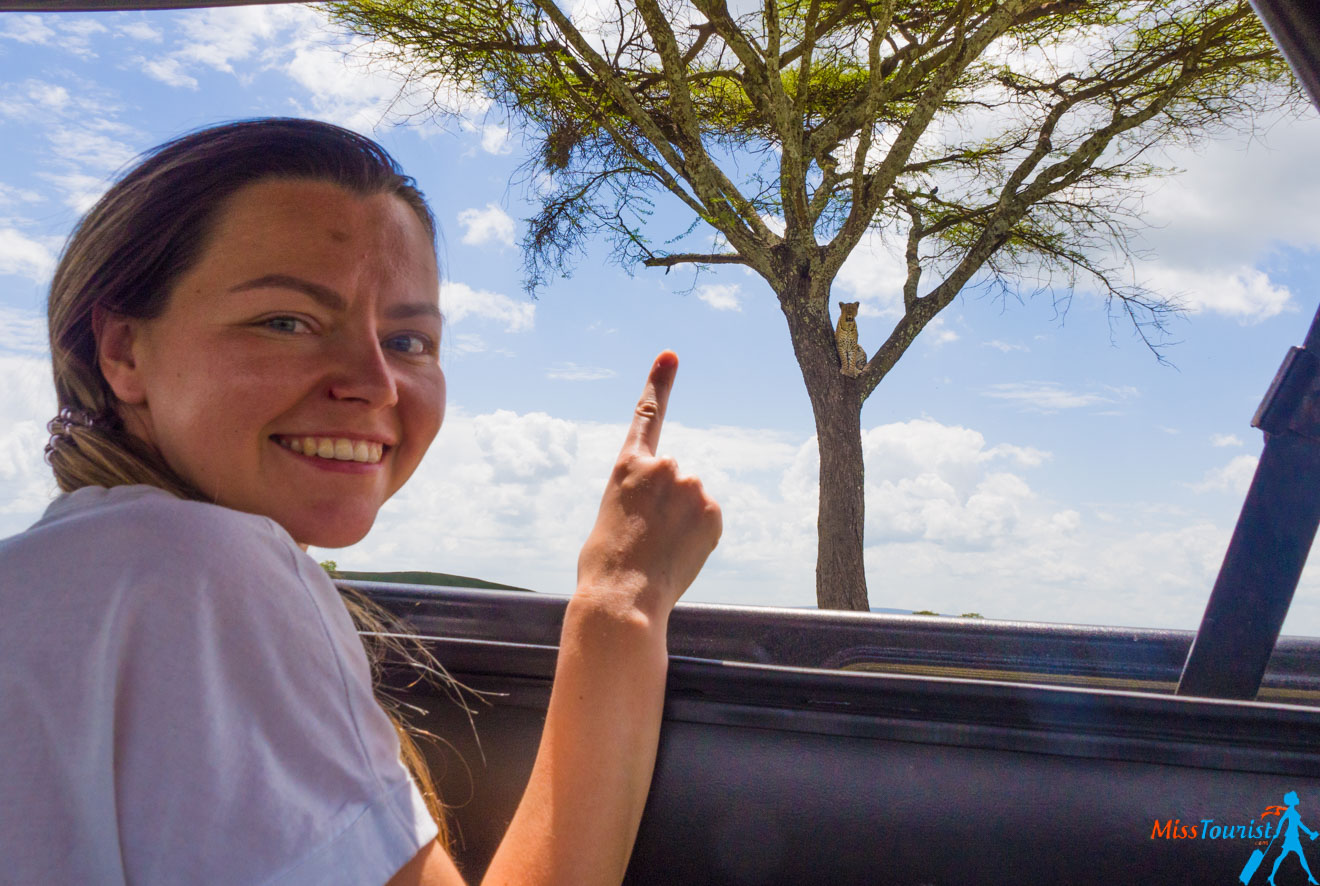
I feel your pain, there are literally THOUSANDS of safari tour operators out there and it is an overwhelming job to choose one that for sure will meet all your needs.
Choose your safari wisely – there is a different kind of safari for every type of traveler. Many will offer you the moon, but double check all the info – unfortunately, not all of them will keep their promises.
First of all, you should ask a potential company the following questions:
(I have to admit, I, myself, did not ask all these questions, but if I had received a list like this beforehand, it would definitely have been really helpful! I believe it will help you immensely to figure out which Tanzanian safari is perfect for you)
- How many people will be in the car? (if you are going as part of a group)
- What kind of car do they have?
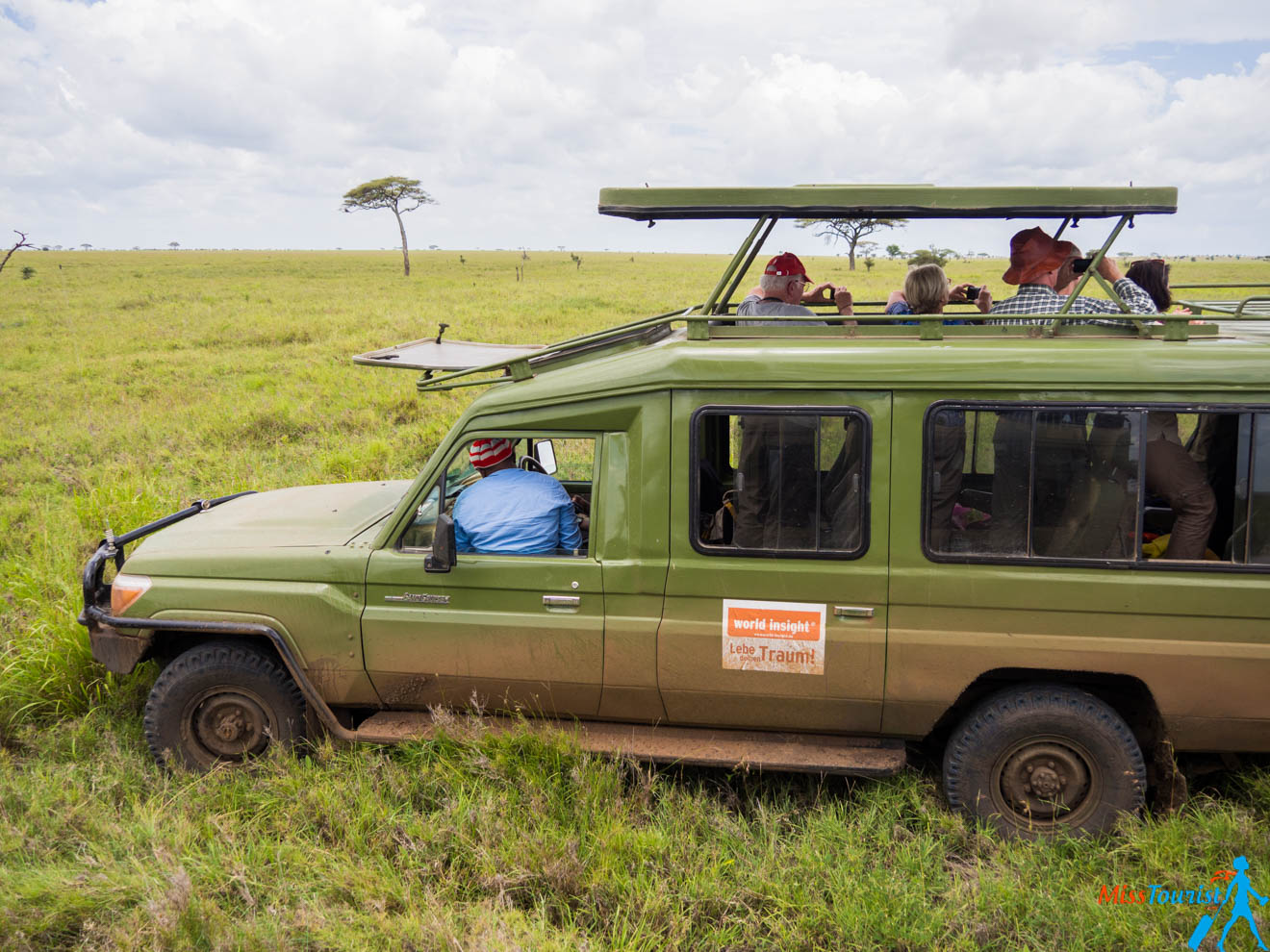
(You need a 4×4 vehicle with a convertible roof) We had a 7 seat Land Rover (the most popular car for safari) for just 2 of us. Will everyone have a window seat? What other perks does the car have? AC would be a huge plus, an opportunity to charge your phone maybe, too. Our car had all of that plus a fridge (though the plugs did not appear to be working upon further investigation, but we did not really need it). How old is the car? Does it have a spare tire in case of emergency?
- Does the company provide binoculars or do you need to bring your own?
- Is the car equipped with radio communication? This is VERY important to communicate with other drivers to follow the animals
- What are their online reviews like?
The reputation of the company is really important and with just a little background check you can see if the company is reliable or a scam. Without checking, you are risking not only taking an unqualified guide, but also sending your money somewhere and never hearing back from them afterwards. Even a 20% deposit is quite a lot of money considering the safari prices, so always double check the legitimacy of the company – where is the address, who is the owner? Google their phone number. There are no risks of fraud with well-known international companies of course, but it might happen with some smaller, lesser known company so it is always best to double check.
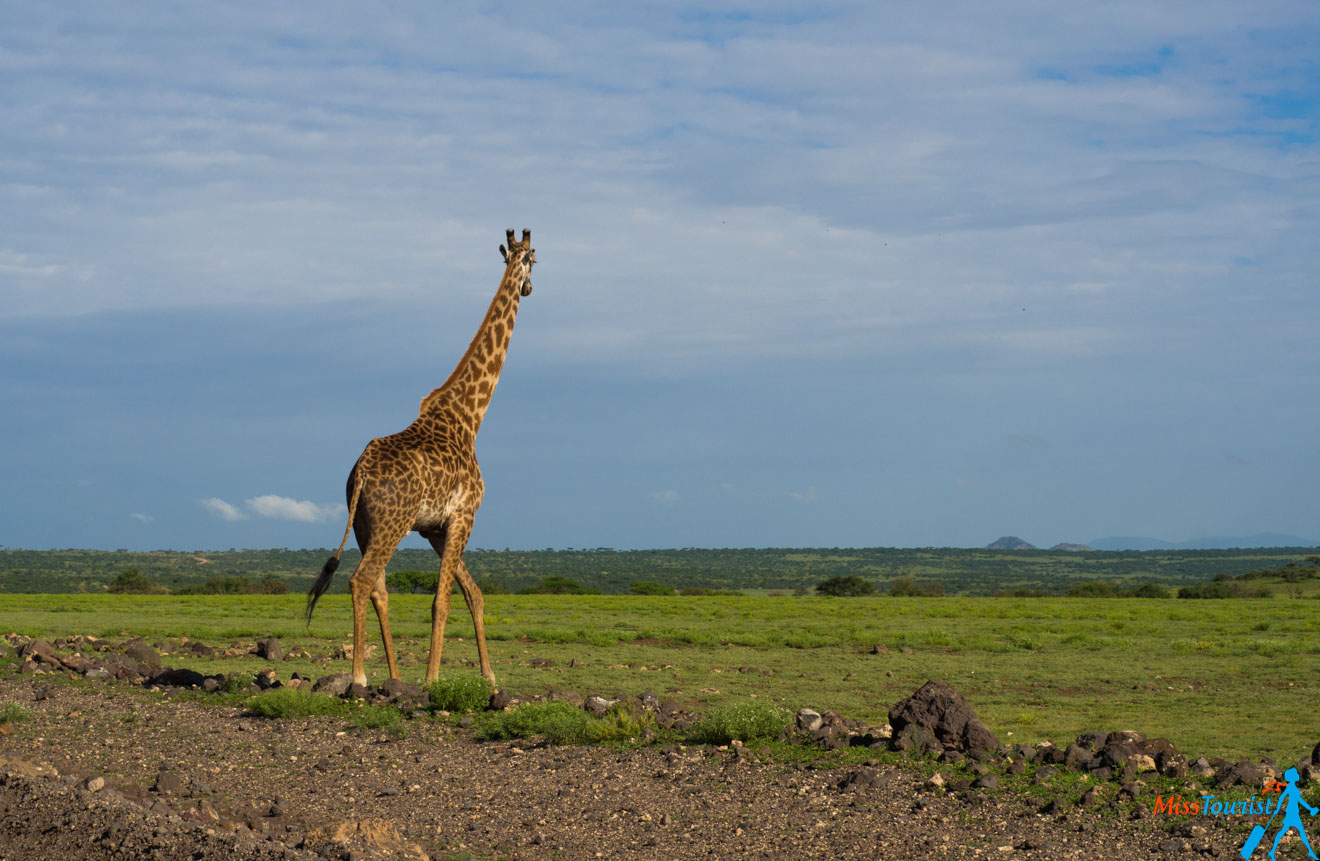
NOTE: if it is a small company that so far has very little presence on the Internet, but you still feel like they are legit, just ask for a couple of contacts for references to make sure everything is in place. Don’t be afraid to ask – if they have nothing to hide, they will be happy to provide it!
- Ask for a detailed itinerary of your game drive – how many hours driving from place to place, and how many hours actually in the park? Are the lodges located inside the park or outside (it is better if they are inside as this means you will be able to start earlier than other tourists the next morning).
- To avoid misunderstandings, make sure to have it confirmed in writing that the entrance fee for the park is included in the price (this is especially applicable to a budget operator where they are trying to get extra cash from you in all possible ways). Forget about oral agreements, I would not rely on that.
- What is the company’s cancellation and refund policy? These kinds of trips are usually planned well in advance but you never know, maybe you won’t be able to make it there after all. Will you get your money back in that case? If so, how much?
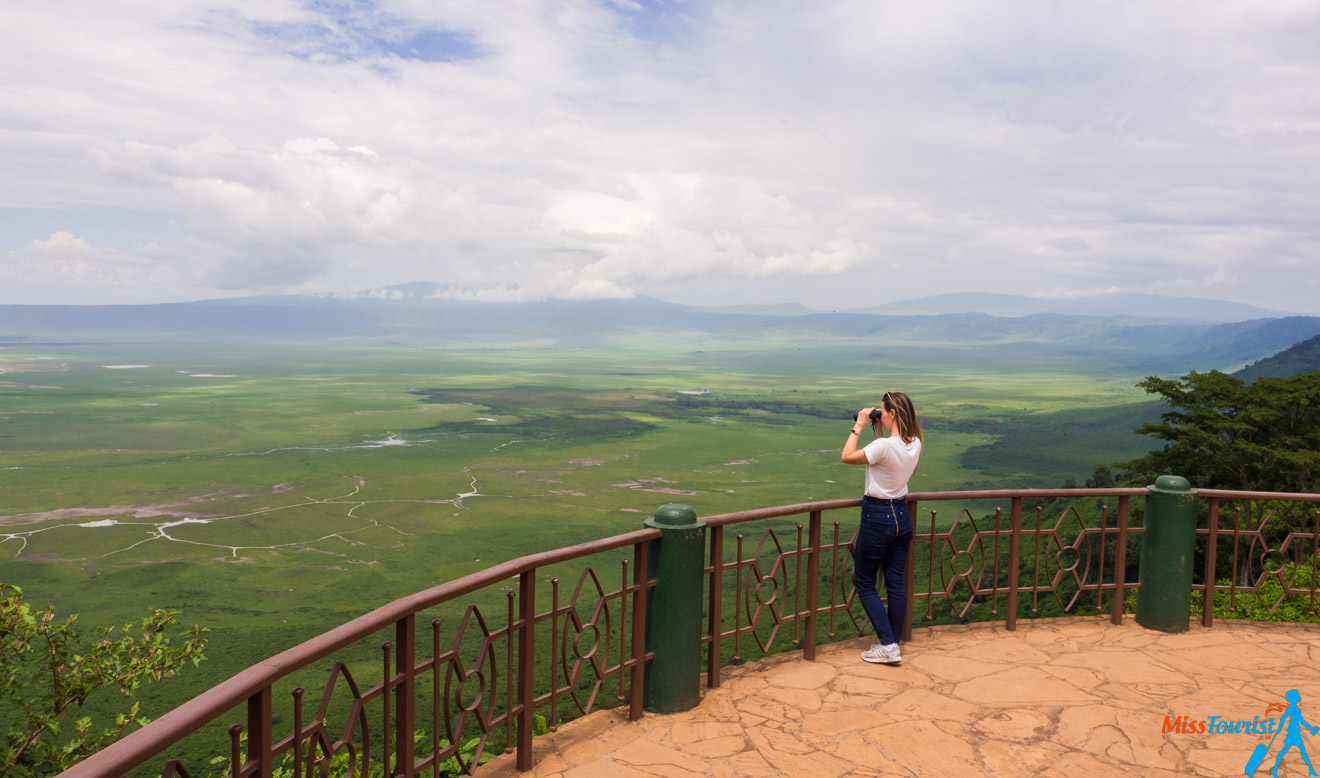
- Are all the activities already included in the price? Usually a visit to a Maasai village is optional and costs a bit extra. A hot air balloon ride is pricey (US $500 per person) for example. If they are listed in the description, double check if it’s an optional extra activity or it is actually included in the price.
- Interested in a night safari? Double check if your guide has a proper license for that (there’s a separate license for night guides). If not, you will have to pay extra for a ranger to accompany you. By the way, in some areas you can also organize a walking safari with rangers who will accompany you with guns for protection.
- If the company is a member of the Flying Doctors – even better! That means if there is an emergency, these guys will be able to rescue you free of charge.
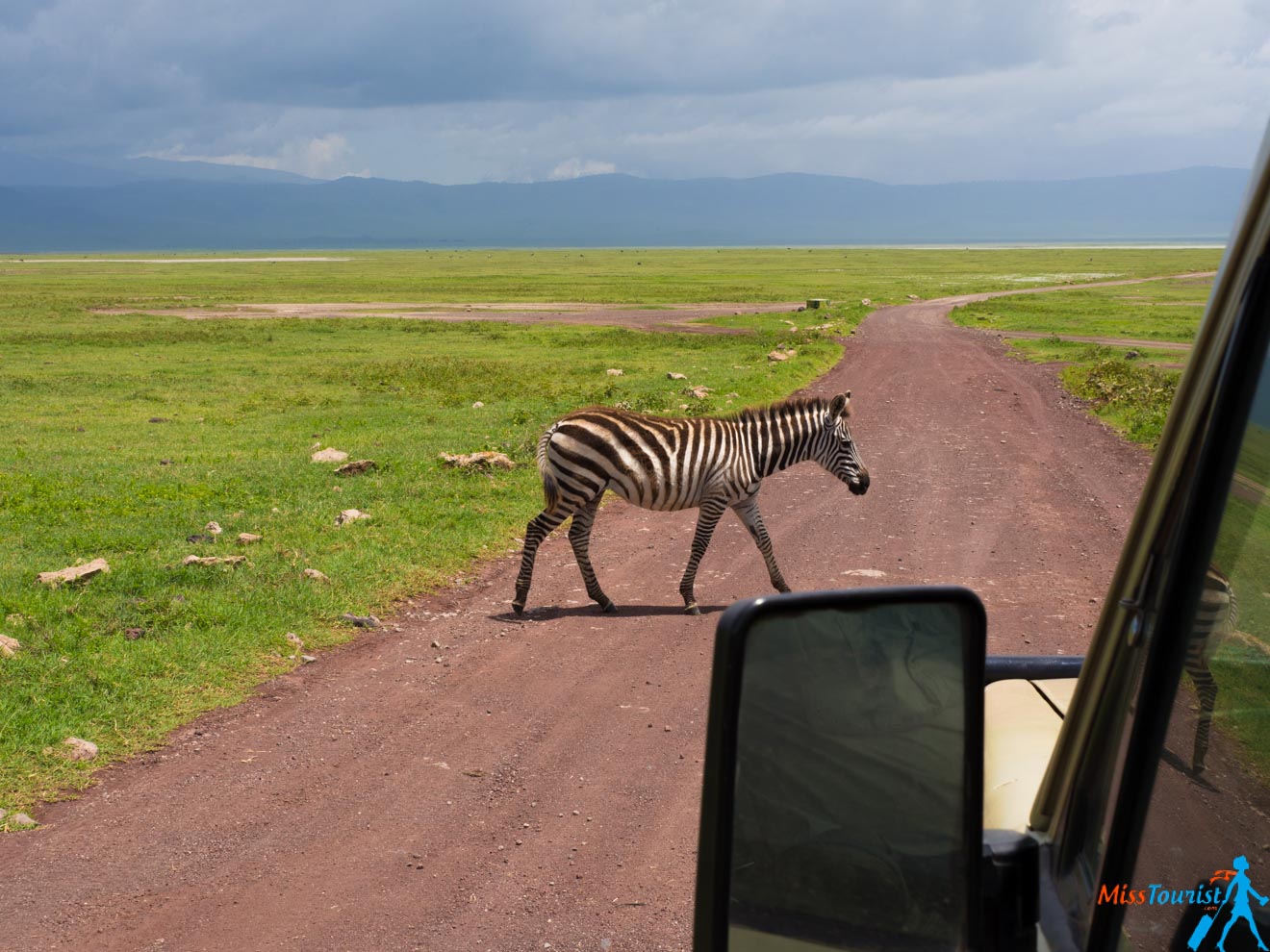
Here are the tour operators that I think are good (the one that I have used myself, the international ones with quality of service I can vouch for, and a couple of the ones that I had a chance to talk to personally). Please do not take this list at face value, but also ask them the questions I have suggested above.
My list of recommended tour operators for a safari:
(Click on the link to see the information, prices and to book your safari):
- Altezza is the company I can vouch for, they organized tons of safaris for celebrities (so, you can be sure everything is done on top-notch level) and in the same time their prices are the same, if not even more affordable than their competitors! Psst, I spoke to the owner, and he kindly agreed to give a 5%(!!) discount to all my readers! If you want to get a discount, write to them to this secret specially created email – [email protected] (this one, not the contact form on their website, otherwise you cannot claim the discount after you have written to them through the direct channel)
- G Adventures has many great tours. The quality of their tours is top notch and I can vouch for them. You can take a look at all the tours they offer here and maybe catch some good promotions too!
- Book All Safaris is a great resource for comparing prices and reviews for all safari companies in Tanzania and beyond. We are talking SkyScanner, but for safaris-a great resource!
P.S. I am not recommending the company I actually used and will not name them here for ethical reasons – while I liked the actual safari, I understood they were tricking my readers by trying to give them a higher price for the same exact tour I took – this in no way can be justified, so I can’t recommend them for you. But hey, Altezza is extremely cool, and they also give you a huge discount (for the actual prices (not originally inflated), promise!), so that is much better!
Subscribe here to get up to 35% off your accommodation for your next trip!
3. How to choose the best itinerary for your safari
Congrats, you have already done the hardest part! Now that you have decided on the company and more or less estimated the costs, it’s time to choose your perfect safari itinerary! Usually, companies offer many suggested itineraries that are well planned, so you can choose from them or you might want to build your own route, too!
Spending half a day each day to drive from one National Park to the other is no fun, so planning a good itinerary is crucial to your success.
NOTE: I would add an hour to the driving estimation your tour operator gives you because sometimes it might take longer due to muddy roads or check-in/check-out delays. National parks are not very close to each other so it might take half a day on the road to get there.
Remember the best route is the one where you feel rested, you are there at the best time to spot the animals and the transportation time is minimal.
I have read that some people recommend skipping Serengeti because it is too crowded, but I don’t agree with that – this is where we saw the most animals, and seriously, I would not even say it was that crowded!
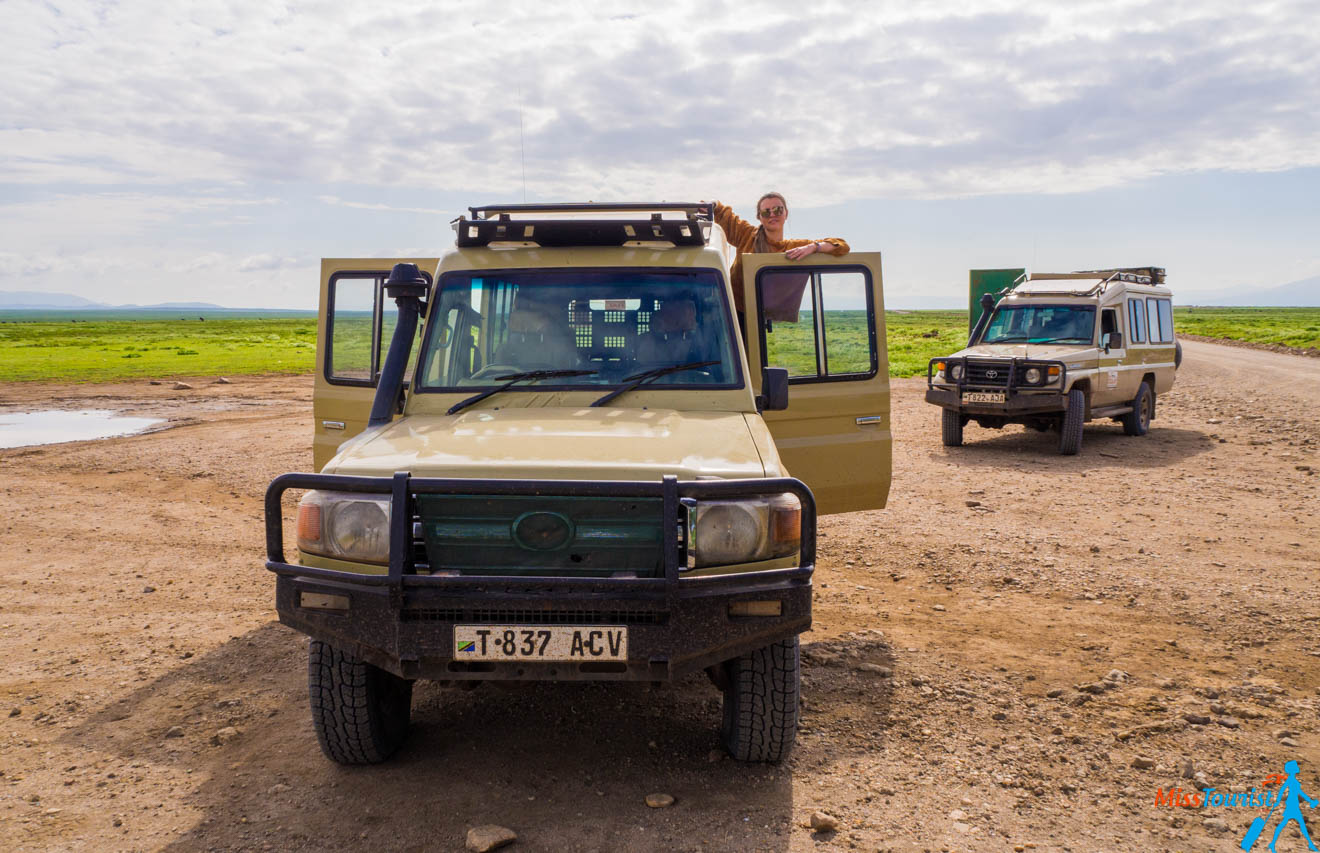
If you are asking yourself where to go for a safari, let me simplify your choices:
The highlights:
- Serengeti National Park
- Ngorongoro Conservation Area
You can read all about these 2 places below in this post as I have been there and I described my experience in detail for you.
Other interesting places to visit:
The above 5 are more than enough for a 5-7 day safari (average length), but if you are considering staying longer, here are even more recommendations:
How many days for a safari in Tanzania are enough?
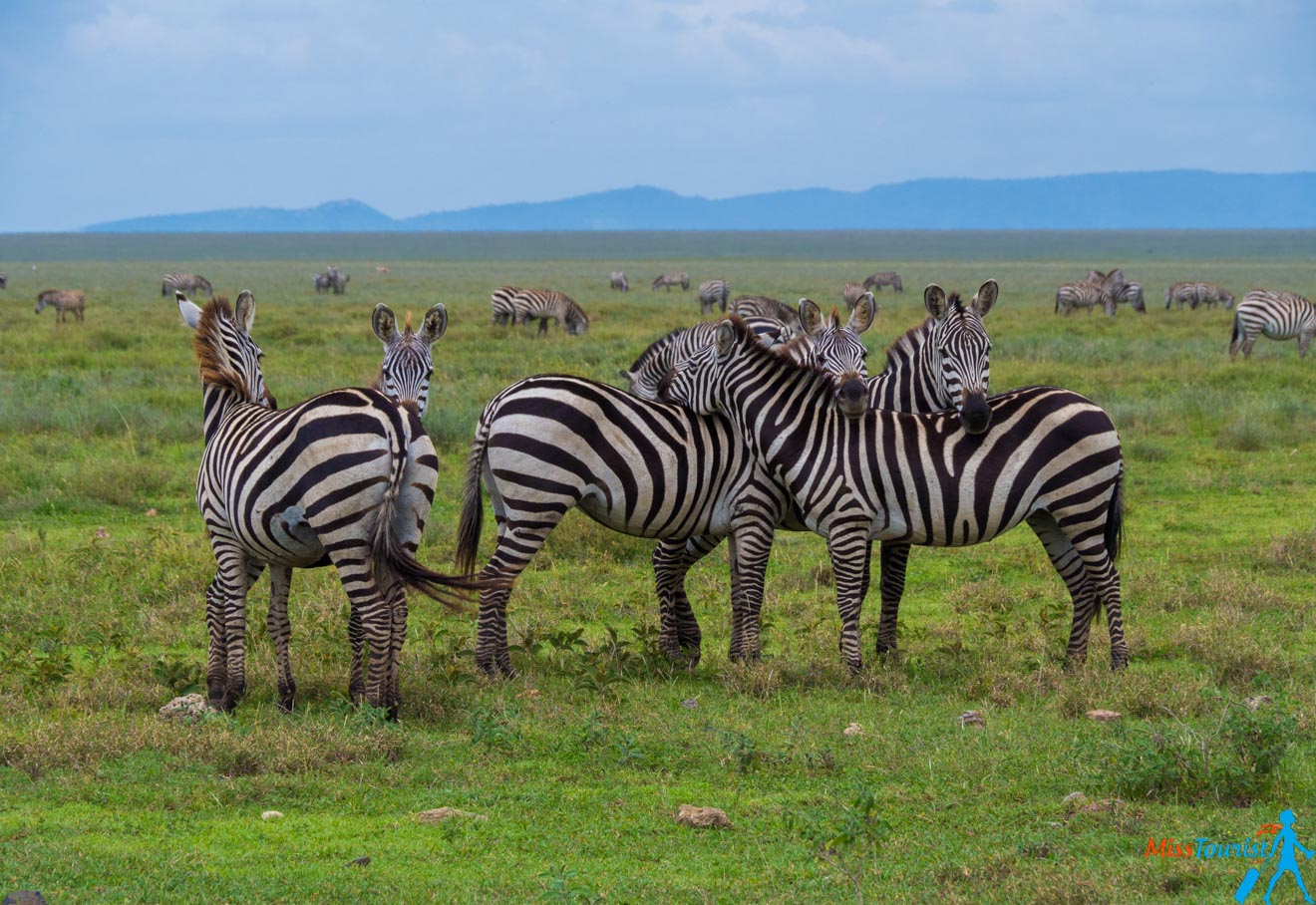
The optimal amount of days really depends on your availability and your preferences. I personally think 7 days would be too much for me, but will it be for you? I don’t know.
If you are traveling with kids, I think 4-5 days is best because the excitement will wear off and they might get tired. If you are a great wildlife enthusiast, you should definitely stay for a week or longer – they have 2-week safaris and even 3-week cross-country safaris!
For those who are thinking about a 1-day safari – I would NOT recommend it, and here is why:
The road to the national parks is long and tiring – even if you start at 5 AM, you will probably arrive at the park in the middle of the day when most of the animals will be hiding somewhere from the hot sun. If you are pressed for time, I would recommend staying overnight for at least 1 night, so that you can wake up early and see the animals at sunrise when they are the most active.
If you only have 1 day, here is a good tour for a 1 day trip from Arusha.
So, how do you choose what’s right for you?
Think about how many days you can stay. Most people say you should stay a bit longer in case you’re unlucky and don’t see The Big 5 in the first days.
Unfortunately I only had 3 days and I could not extend the safari any longer, but we were lucky to see all the animals in such a short period of time, so to me 3 days felt like it was perfect!
4. When to go for a safari in Tanzania
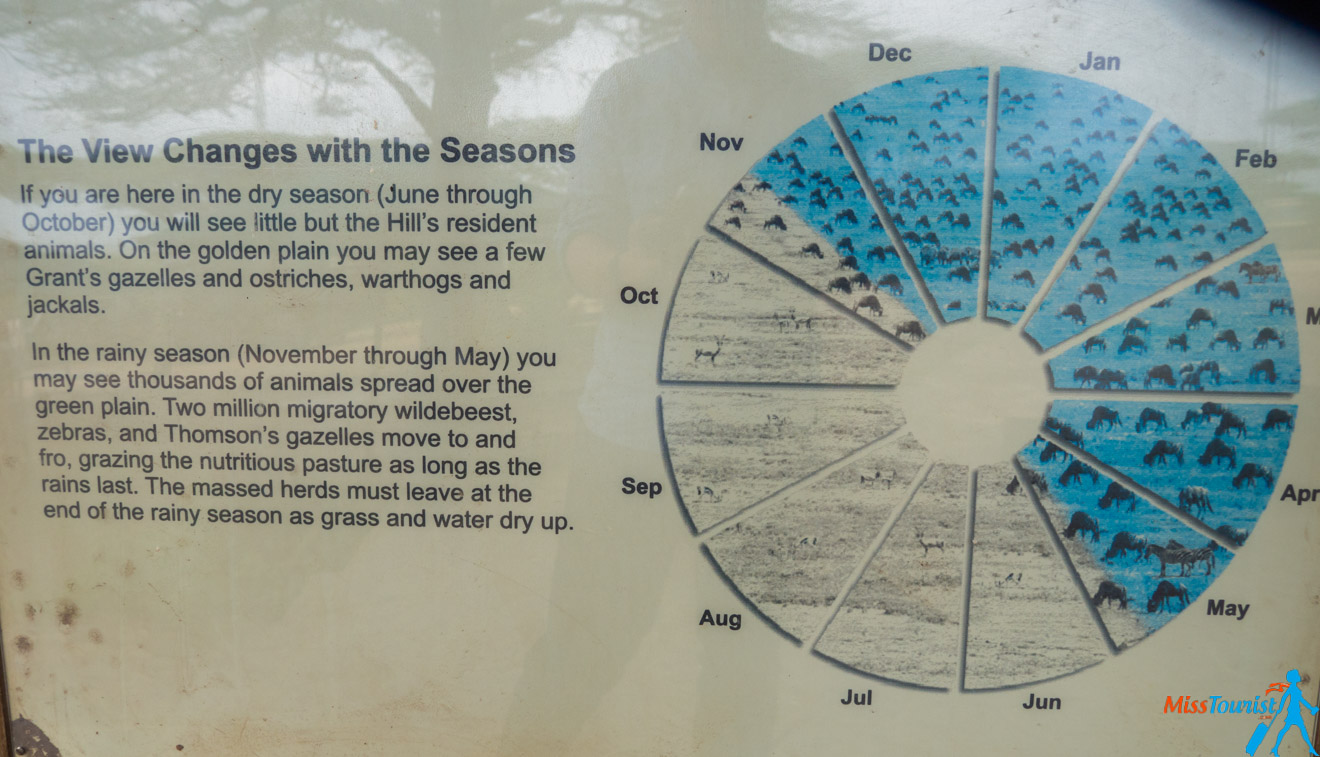
Dry season is probably the best time to take a safari tour – simply because you will be able to properly see the animals.
I visited in mid-January and it was raining a little bit. It was also a bit uncomfortable because the roads were muddy, but otherwise it was fine. We were also quite lucky that it didn’t rain heavily for a long time.
Going in off-season, as usual, comes with its own advantages such as lower prices and fewer tourists.
The maximum number of jeeps I saw was about 8-9 when everyone came to see the lions with their cubs. It already felt like quite a long line of cars so I can only imagine what happens if there are 20 or more vehicles!
In Tanzania, you can see the great migration pretty much all year round.
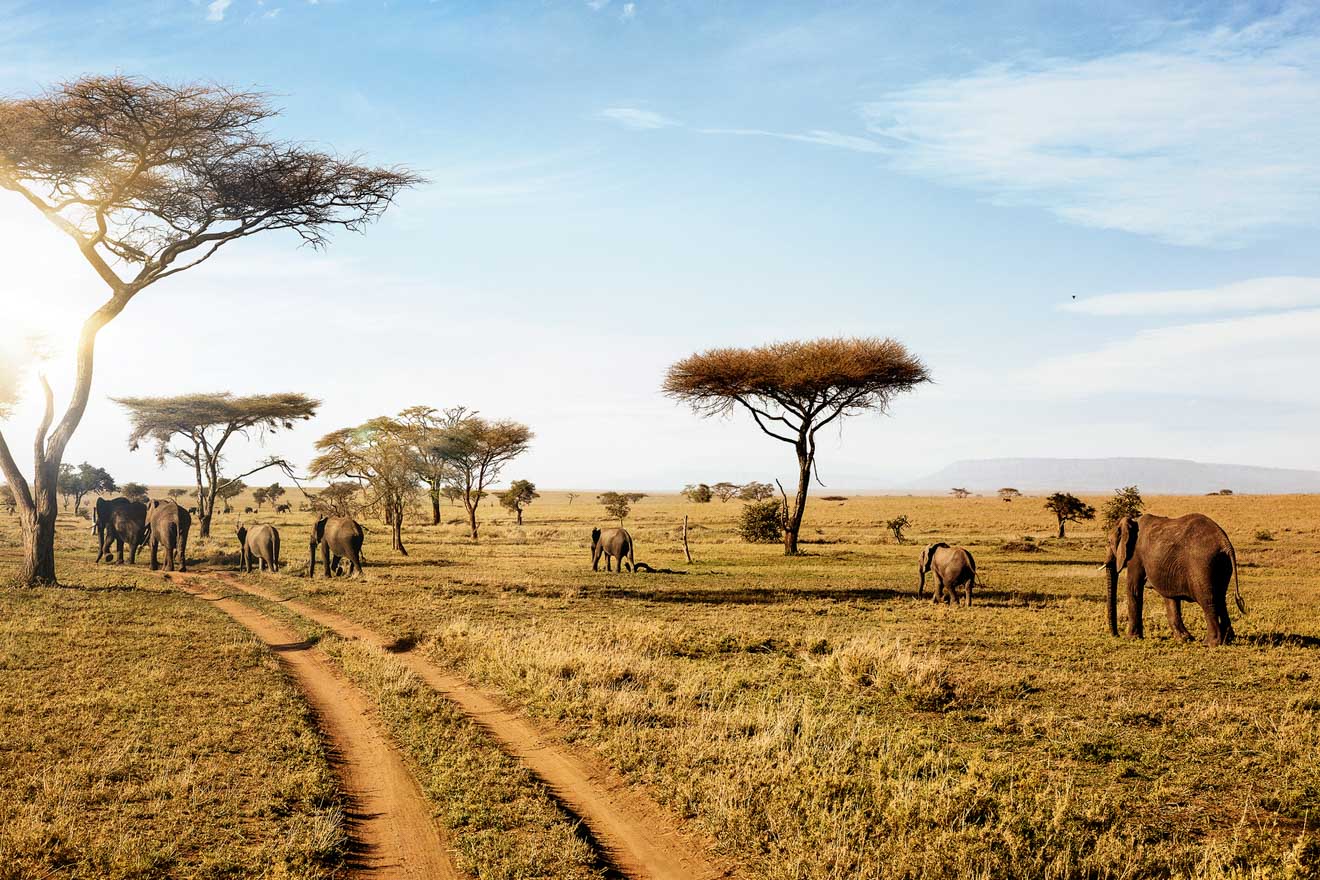
Calving Season (January and February) – In late January and February it is calving season and you might be lucky to see baby zebras and wildebeest. We were there in mid-January and unfortunately it was a bit too early for that! But we saw the great migration, which was wonderful so I am not even sad! It also might rain a little bit though it is not yet the truly rainy season.
Wet Season (March to May) – Cons: it might heavily rain, the visibility won’t be that good, and staying in a normal tent is not pleasant. Pros: as it is low season, the rates for luxury accommodation like One Nature are greatly reduced.
Peak Season (June to October) – easier to spot wildlife during the dry season because most animals hang around water sources. Cons: is it more crowded and more expensive.
Shoulder Season (November and December) – it might also be a little rainy during these two months, and the accommodations are not as cheap. Pros: it is a quiet time of the year, very few tourists.
I know that many people want to see the Great Migration, so here is where to see it by months:
- December – March: Ndutu, Southern Serengeti
- April – May: Grumeti, Western Serengeti
- June – July: Seronera, Central Serengeti
- July – September/October: Lobo/Kogatende, Northern Serengeti
5. What do I need to pack for a safari?

Below you will find what to wear for a safari in Tanzania, as well as recommendations of which accessories and other useful things to take with you:
Clothes and shoes:
- A jacket with many pockets – holding all your small items in one place will be problematic as the jeep is shaky when moving, but reaching into a pocket is easy. You can put your chapstick there, extra batteries, toilet paper, a camera lens, hand sanitizer etc.
- A brimmed hat – to protect you from the strong sun; make sure the material is light
- A pair of sunglasses – with polarized lens; useful to avoid the dust in your eyes as well
- A scarf – it can keep you warm if needed or protect your shoulders from the sun
- A warm jacket – for the game drives during night, early morning or late evening
- Long sleeve shirt or a hoodie – good for layering
- Tank tops – great for layering as well
- A pair of warm, comfortable pants – you will be getting in and out of the jeep every day, so you need comfortable bottoms
- A pair of shorts – comfy, made from a breathable material
- A bathing suit – in case your accommodation has a swimming pool
- A pair of good boots – to wear during the game drives
- A comfy dress– for the times when you will be at the lodge
- A pair of sandals – for staying at the lodge as well
- Long, warm socks
Gear and accessories:
- Your camera – I shoot with an Olympus OM-D E-M10 Mark II
- If you can afford it, a telephoto lens. You can also rent it – check for these services in your city (they usually cost US $15-$20 a day, so it would not break the bank). In any case, bring a good camera and a good lens-there is no other way to take a good picture of an animal that’s far away
- Extra batteries and a power bank – depending on where you stay, electricity might be scarce
- An extra SD card – trust me, you will be taking lots of pictures! 🙂
- A universal adaptor – Tanzania has the same types of electrical plugs as the UK
- A headlamp – you are going to be provided a lamp in high-end hotels, but it never hurts to have your own just in case. It will come in handy for sure if you will be staying in tents
- A pair of binoculars – these are nice to have for seeing animals that are far away; you will probably have a pair in your safari car, but you can take your own pair if you want
- Hand sanitizer – Very useful during the day, when you will be traveling with the jeep
- Earplugs – there are a lot of noises on the safari at night
- Sunblock – the sun is strong and the days are long, so I recommend SPF 50+
- Insect repellent – if you are going in the summer
6. What if I don’t see ANY animals on my safari?
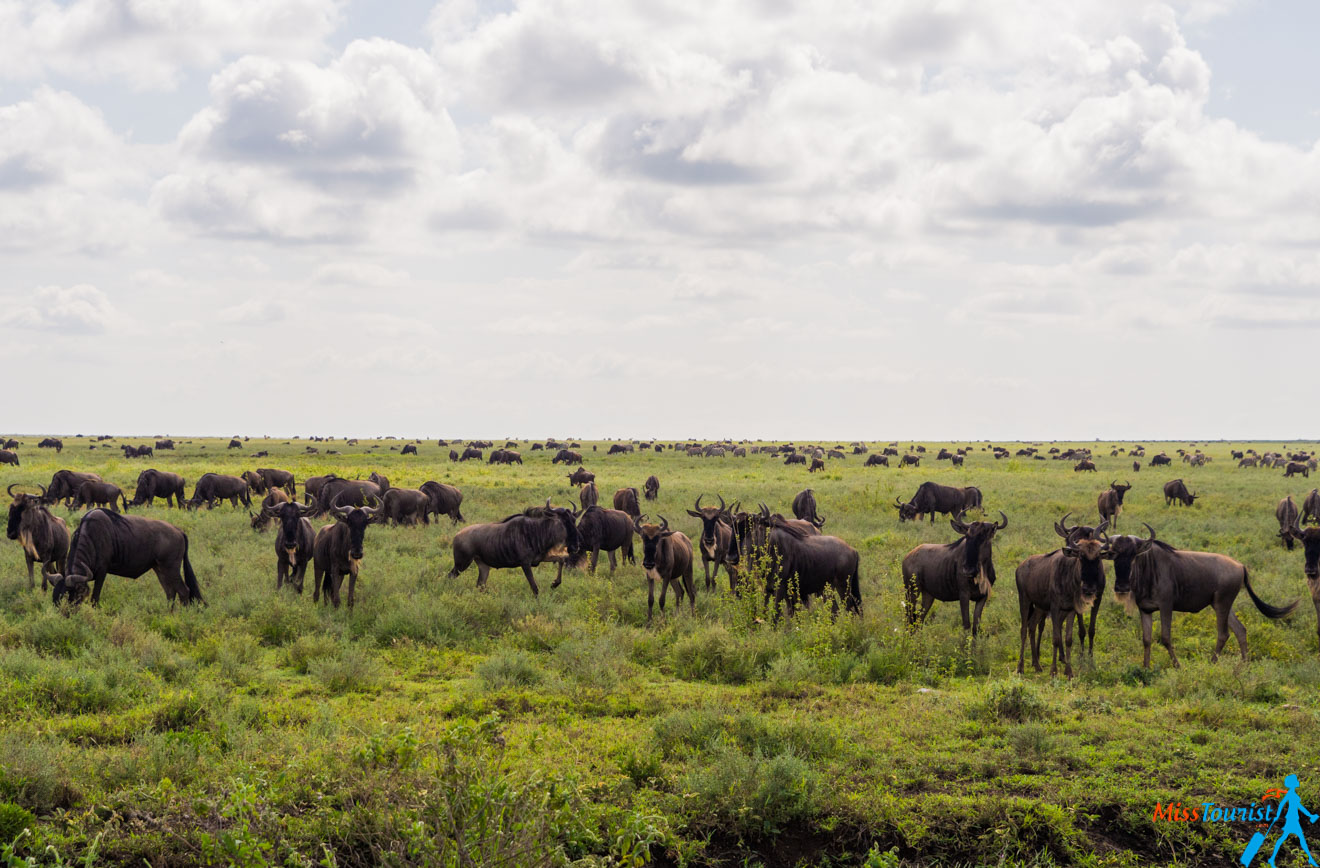
While not seeing wildlife at all is hardly a possibility because national parks are full of them, you might get unlucky and not see the Big 5 or only some of the Big 5. Please keep in mind that you are in the wild and a game drive is part of the experience, it is not a zoo 🙂
Any safari is a gamble in a way because no one can promise you 100% that you will encounter, say, a lion. They wander around and can do whatever they want.
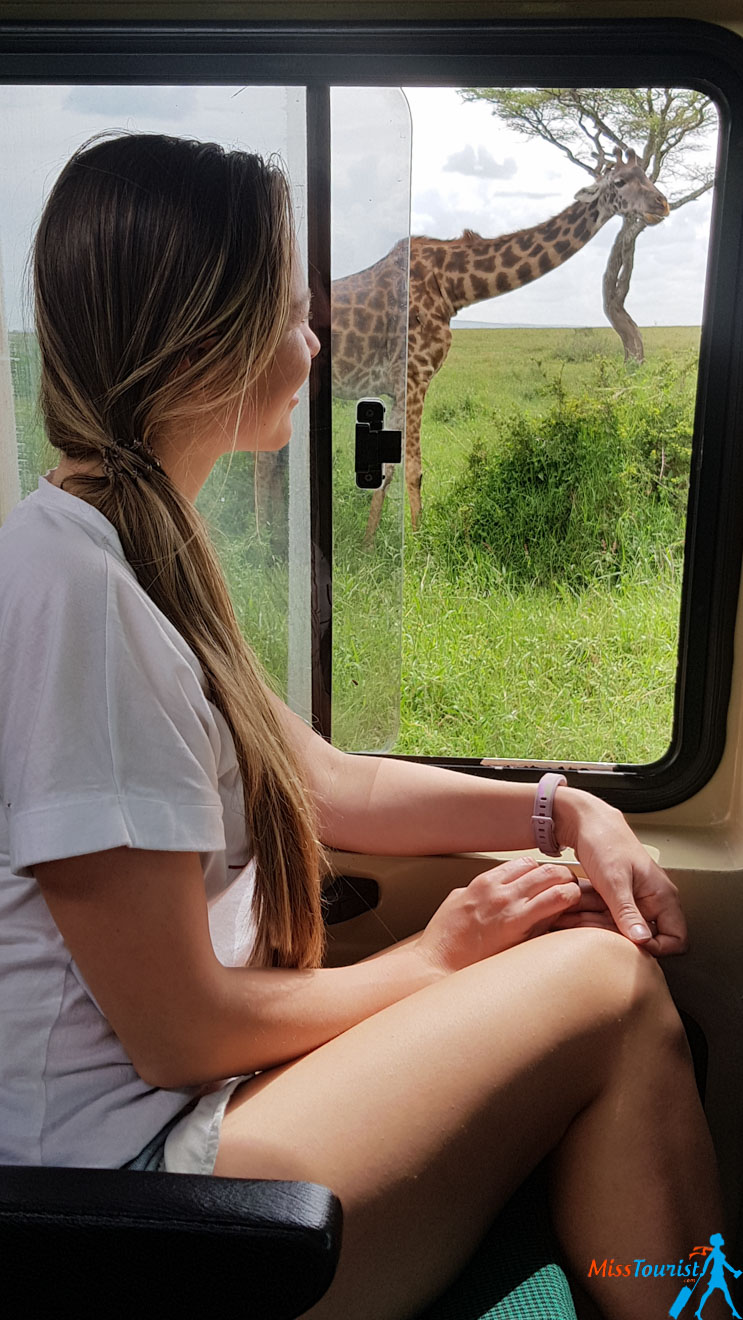
While your driver will do everything possible to get close to them (all safari drivers have radio communication between each other and they usually know the right places to go to), you might get unlucky, so I’d like you to be prepared for that.
Sometimes you will need to be a bit more flexible in order to see the animals. I remember one of the days, when we were already heading to a lunch place and were quite hungry, our driver asked if we were okay with postponing lunch for another hour because he just received some info that there was a leopard nearby.
Did we mind skipping lunch in order to see the leopard? Hell no! I don’t care about the food, that’s not what we are here for, right?
Sometimes it might happen that you will need to wake up earlier or finish later because of the rain or some other situation. If you are willing to do what your guide suggests, trust me, your experience will be awesome!
So, if you are going on a safari with an aim to see a particular animal, that might not happen (though the chances are still high it will!), but you will for sure see some exotic animals!
Again, this is wildlife, not a zoo, so please be prepared for it and don’t be too sad if this happens. I can promise, you still will have a lot of fun!
7. Can I organize a self-drive safari without the use of a tour operator?
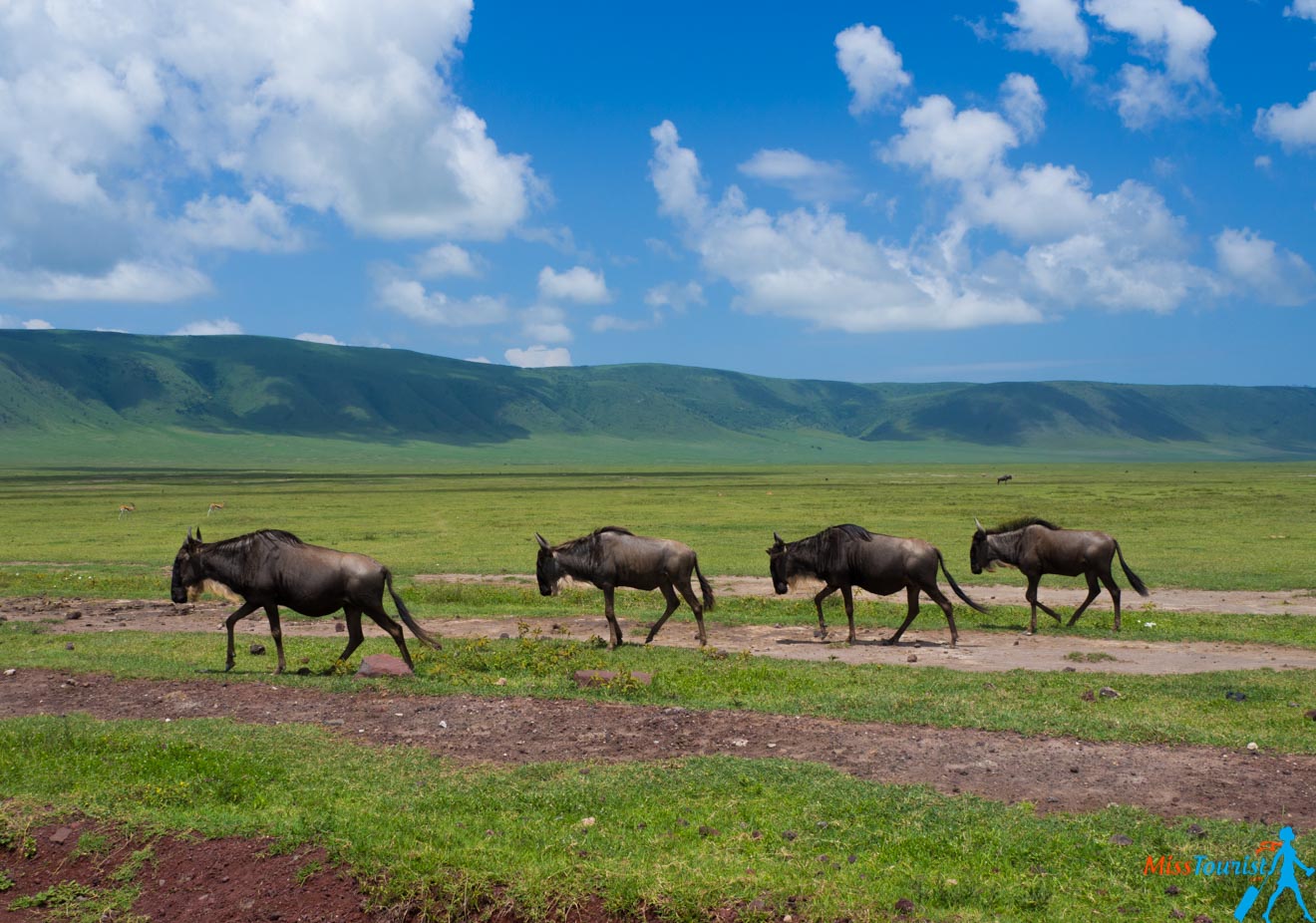
Some of the national parks in Africa don’t require a certified driver so you can rent a car and visit the park by yourself. Indeed, many people do that in South Africa and Namibia.
Here is why I don’t think that is a great option when it comes to Tanzania:
- It might cost you more or less the same as having a tour operator organize it or even be more expensive in some cases to organize it by yourself (safari companies actually get better deals for lodges than independent travelers)
- There is A LOT of paperwork you will need to do at the entrance to the park
- You might not see much, with an almost 100% likelihood you won’t see as much as with a driver
- If you are doing an independent safari, you might easily get lost in a national park because they are huuuge! There are no proper roads that are shown on a GPS. You will be given a paper map, but it is not easy to navigate or understand what is where. Did I mention the area is quite huge?!
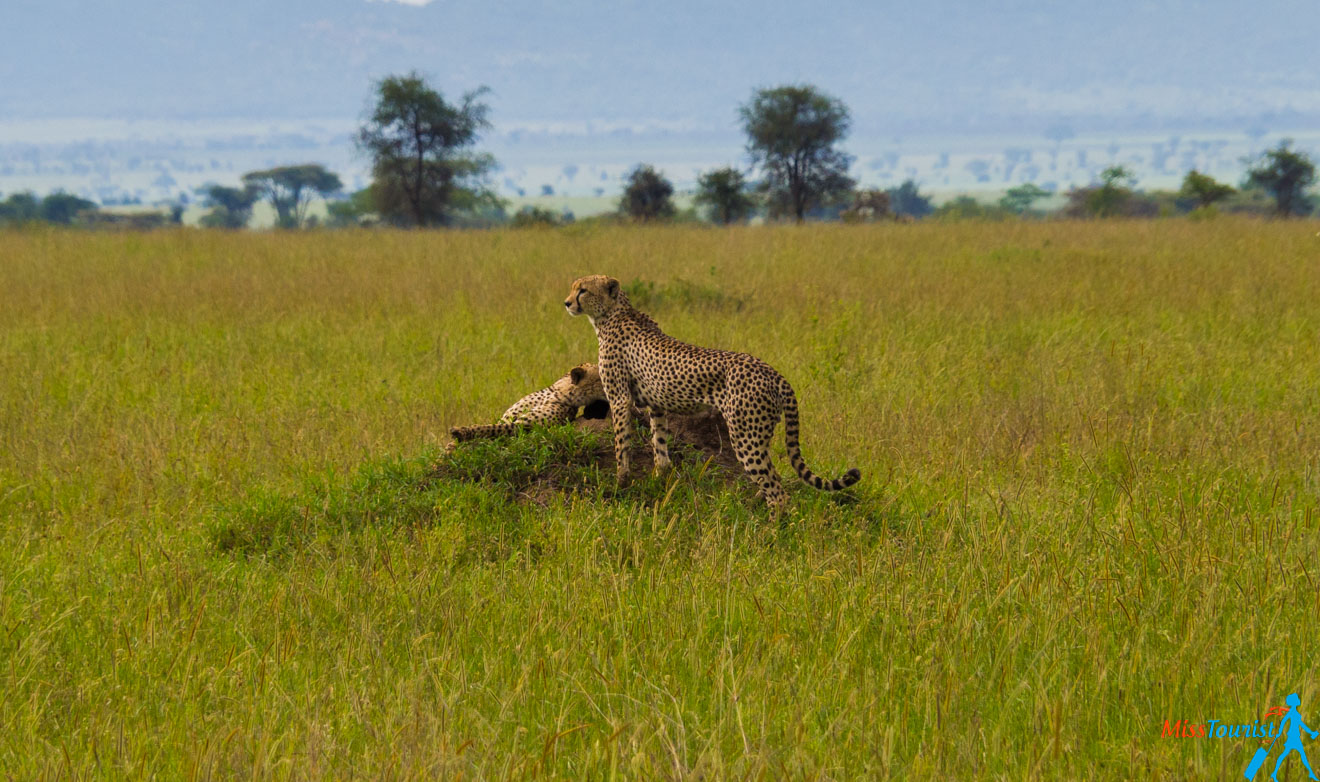
- The roads are really a bad quality and you will need to cross rivers and go off-road. Many cars get stuck there, even the experienced drivers, and I saw it happen to a couple of cars myself. That tourist spent half a day in the car (they are not allowed to get out and it was also raining). If you don’t know the area, this can easily happen to you and you won’t even know how to get help.
- Last but not least, all safari drivers are also very knowledgeable guides- they know their animals! They all need to pass an extensive test before they are allowed to drive tourists. So you will not see the animals or learn why they behave the way they do, why they are here now, etc if you drive yourself. To me this was priceless information that I would not find in Wikipedia and, let’s be honest, I would not search for it either!
In order to understand if you would like to organize a safari by yourself or take a tour, I recommend checking out the prices here first.
So how do you find a safari-guide if you want to organize the tour with an individual guide? You can search on forums or on LinkedIn and then send them a message through Facebook or over email. It will be a bit cheaper, but you need to understand that there is no guarantee this person will show up or that he will be good.
TIP: Bargain hard with them!
Prices for a self-organized safari
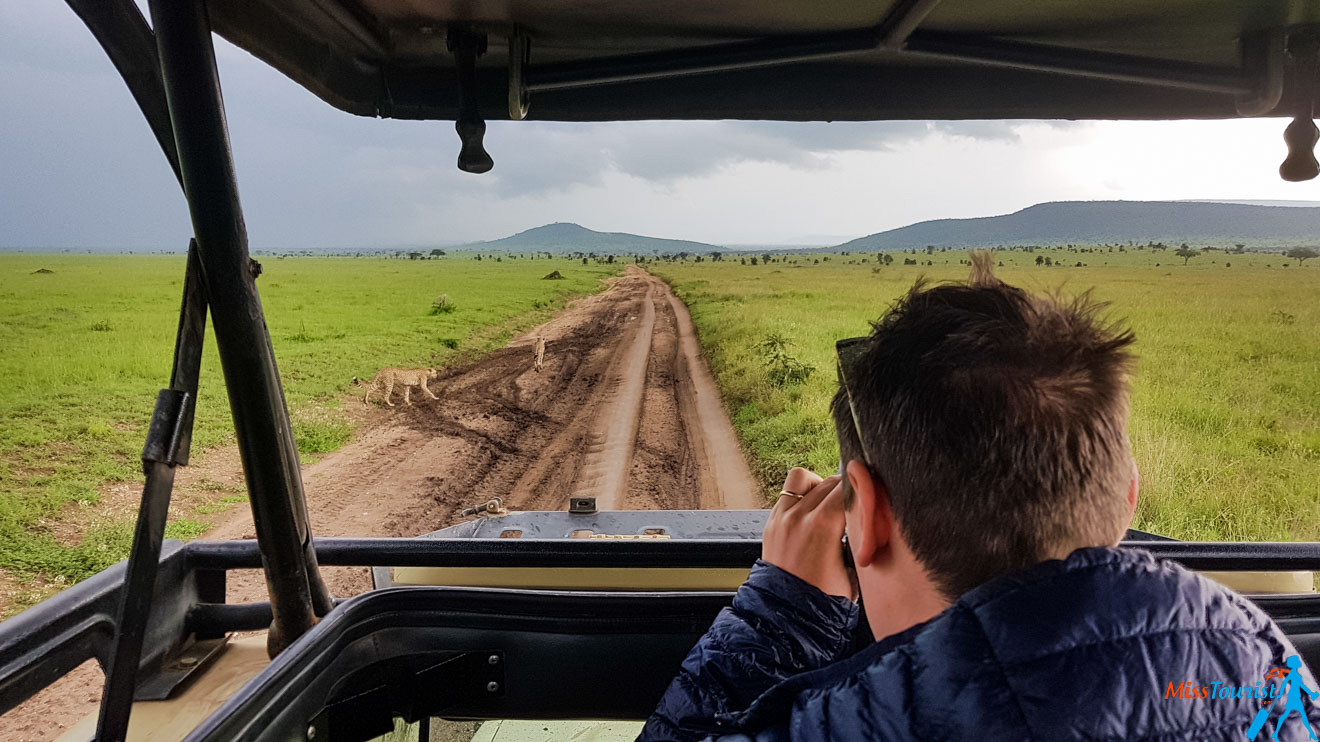
Here is a sample calculation:
US $60 per person per day to enter Serengeti plus the vehicle fee is from US $150 to US $200 per day (depending on the jeep’s weight). Accommodation is from US $20 per person (hostel). Food is cheap – about US $5 for a meal. A Land Cruiser (a simple RAV4 is not recommended for Serengeti) can be rented in Arusha from US $150 per day, though I could not find a good site on the internet that would clearly state the prices; it’s likely you would have to book it right there on the spot. Update: I have found one decent-looking company here.
You do the math – let’s say it is 2 of you and you want to visit for 3 days – a bit more than US $1000 for both + US $600 for the car + gasoline – it is about US $2000 for 2 people for 3 days. Also consider you will have to do the whole job by yourself and will be staying in very simple places.
This is just a sample calculation. You should do your own calculation for the amount of days you choose and the number of people going, compare it with group tour and private tour prices and make a decision based on that.
All in all, it is your decision and you can absolutely do it yourself if you want to, but I decided it should be my vacation and I didn’t want to deal with any problems during my safari, so I relied on the professionalism of my guide and did not regret it one bit!
NOTE: If you decide to do a self-drive safari, don’t forget to take some cash with you because some of the parks don’t accept credit cards.
NOTE 2: When renting your car from private individuals or hiring a private tour guide, make sure you have a 4×4 car because some of them actually use minivans to drive tourists around (NOT recommended at all).
| 🎤 Recommended tour operator: | Altezza |
| 💵 Avg safari price: | Mid-range~$400 per person |
| ☀️ Best time of year: | June to October |
| 📅 How many days: | 4-5 day |
BONUS – My experience – 3-day safari itinerary
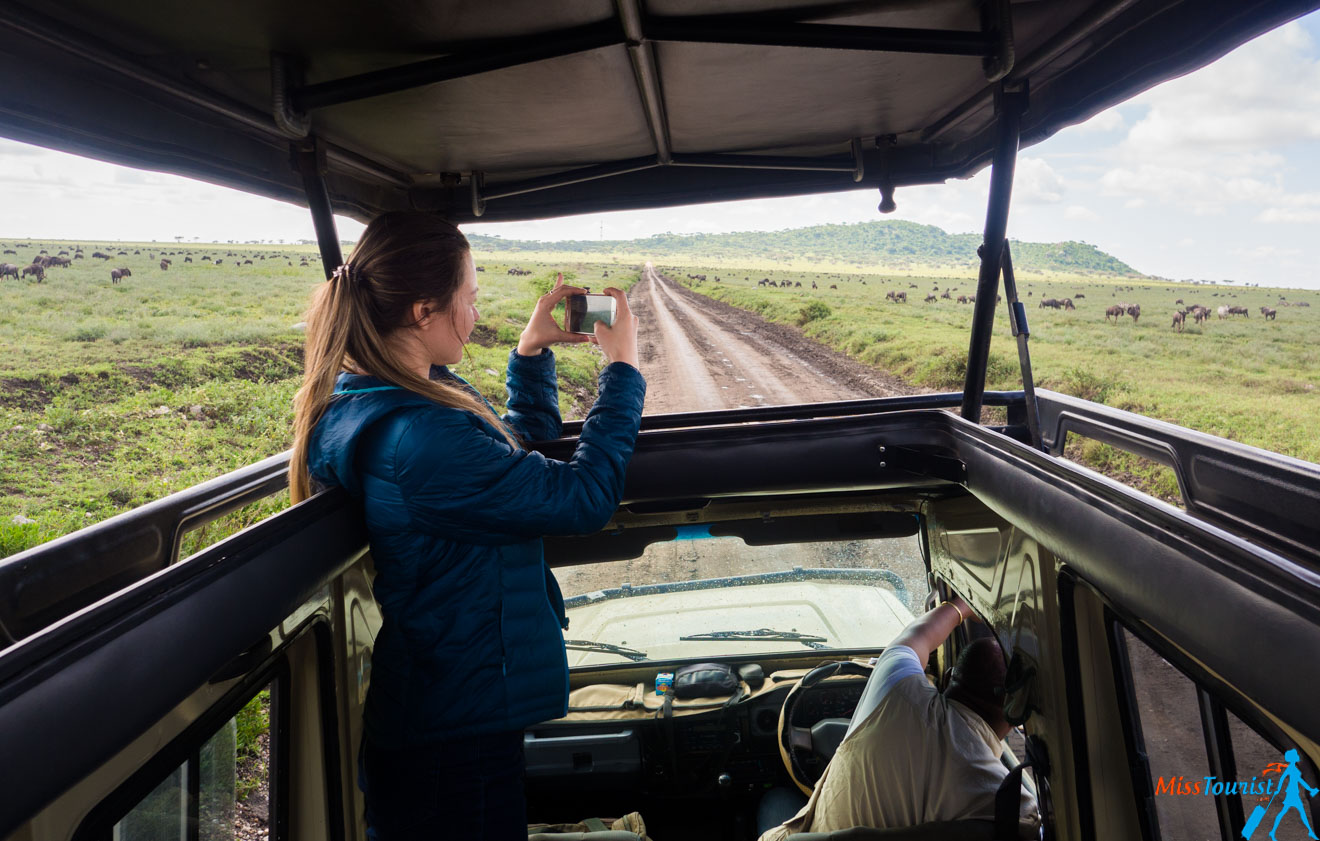
Whaaaaat? She only went for 3 days? That is really not enough!
Don’t throw tomatoes at me, please :). I know many people do safaris for a way longer period of time, but this was my choice. My 3-week Tanzanian itinerary was absolutely packed with activities and I really did not have more time than that. Also, I actually managed to see all the animals I wanted to in those days so I am more than satisfied.
It’s up to you to decide how many days you think will be enough. For a normal person (I mean, not a biologist or something like that) 5 days, in my humble opinion, is just perfect to make sure you see all the animals. 3 days will do if you don’t have much time like me (it requires some luck though!).
Here it comes, my itinerary:
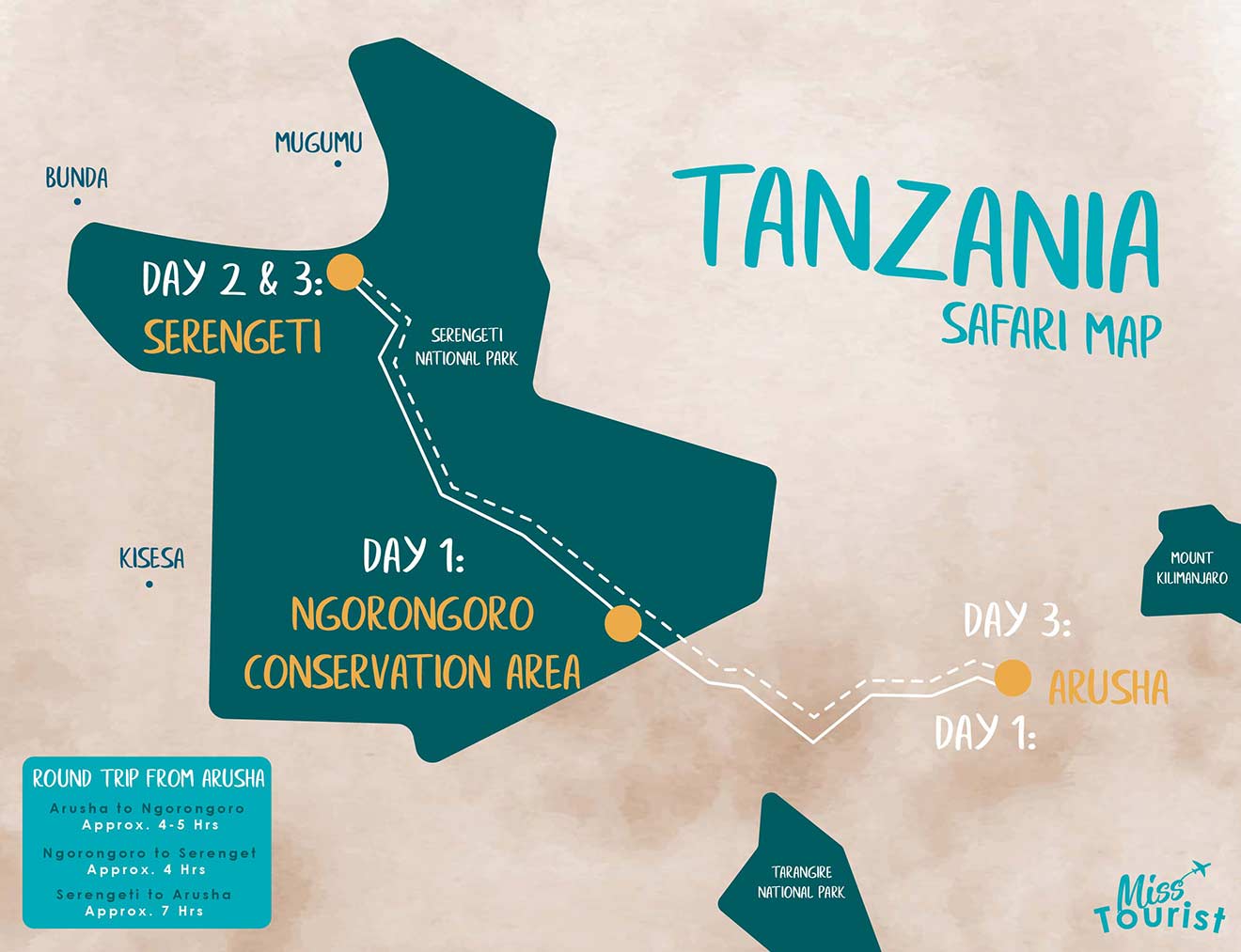
Day 1 – Safari in Ngorongoro Conservation Area
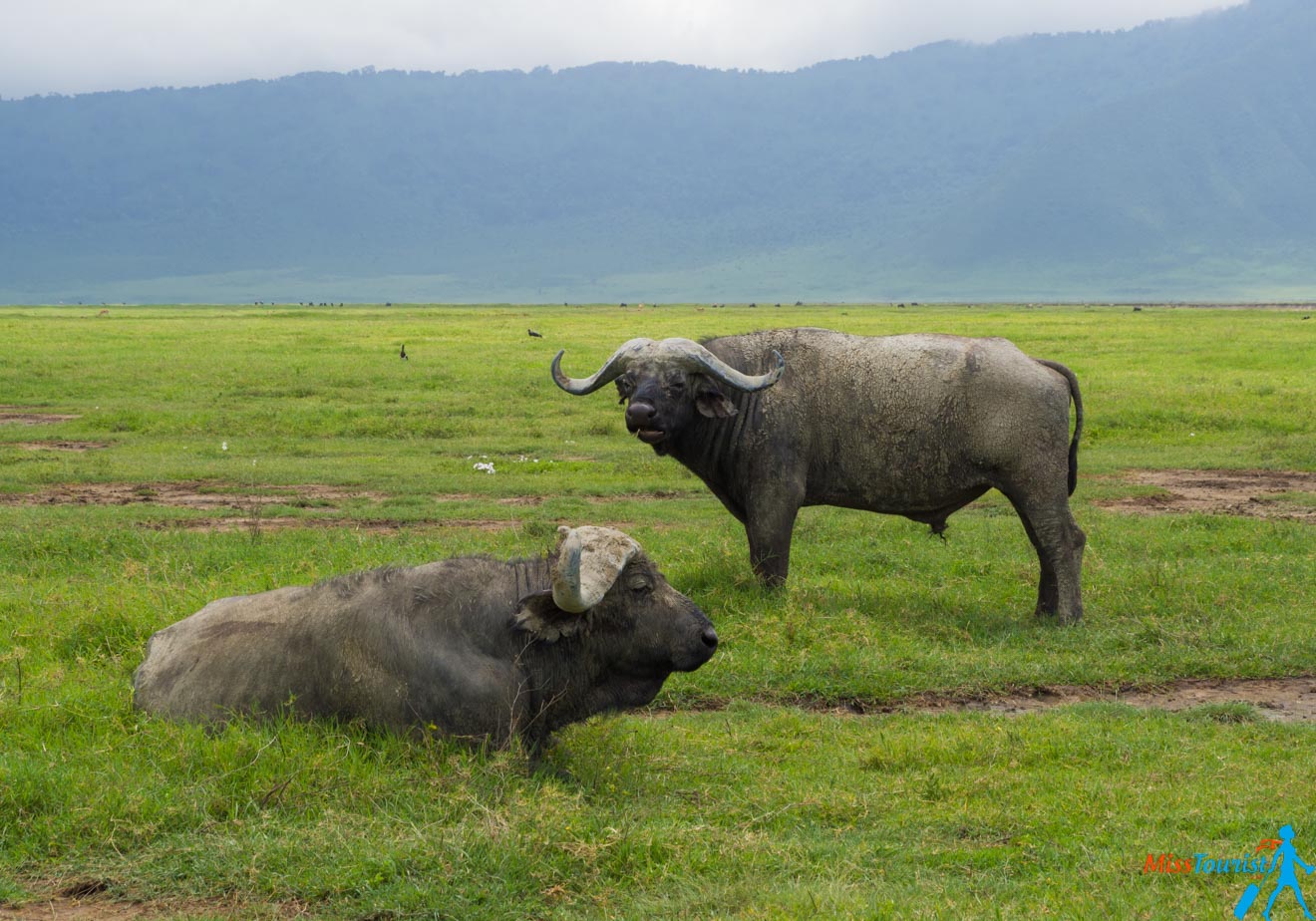
We started out in a city called Arusha where most of the safaris start from. We stayed in a good hotel included in our package called Green Mountain Hotel, and the food was included, too (excluding alcoholic beverages).
Arusha is a big city of 1.7 million people and is most famous for its tanzanite, a beautiful blue precious stone that can only be found in mainland Tanzania (hence, the name).
We started at 7 a.m. and went to Ngorongoro, about a 5-hour drive from Arusha on some bumpy roads (they call it an “African massage” over there).
Ngorongoro means “cow bells” in Maasai, the language of the local aboriginal population. If you don’t know anything about the Maasai people, I recommend checking out this interesting documentary about them. This will help you to prepare for your visit to Tanzania and understand its roots better.
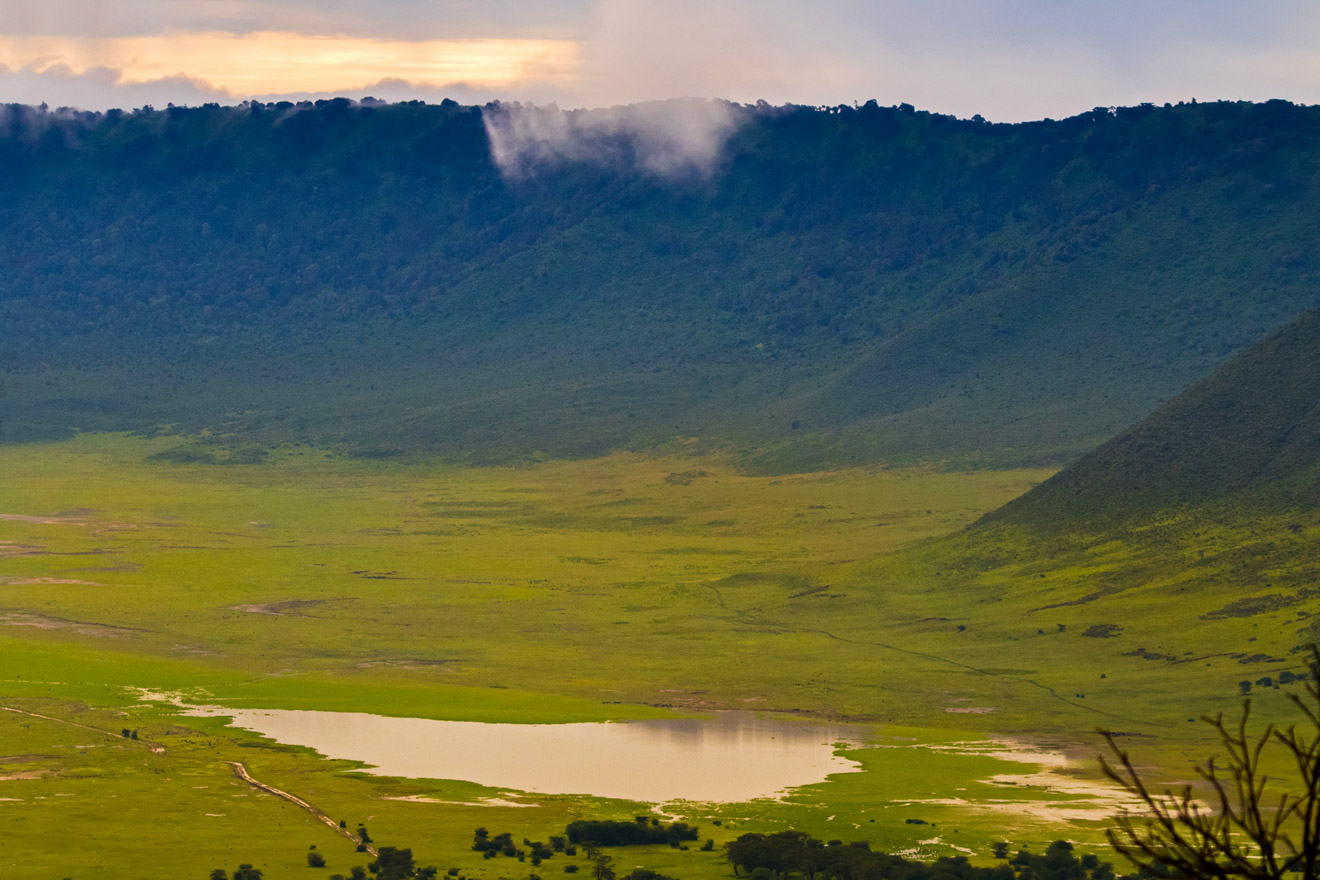
Ngorongoro is a crater and it forms a unique environment. When you arrive at Ngorongoro, you will see that the soil is red because the area of the crater has volcanic soil mixed with minerals. Interestingly, animals that graze on the grass that grows on this soil have particularly shiny skin and are significantly bigger because of this, too!
The area of the crater is huuuuuge – it is over 8,000 square kilometers!
Funny enough, we saw a huge elephant crossing our road literally 30 seconds into the park. It felt like we were in Jurassic Park, really!
Our guide told us that it is hard to spot leopards in Ngorongroro, but easy to see elephants, buffalos and lions. We saw one leopard cross the road very quickly in front of our jeep and our guide was shocked because he said he hadn’t seen any there for over 3 years!
The whole area is extremely pretty! We saw so many animals that day! Elephants (many!), zebras, buffalos (many!), hippos, hyenas, lions and rhinos (from afar). There were many Masaai people in the park, too, because they actually live there and we could see their schools and houses.

Excited and full of emotions, we arrived at our lodge in the evening. We were upgraded to the Rhino Lodge inside the park and were already there by 5 pm. It was a charming place- I loved everything about it!
Day 2 – Safari in Serengeti National Park
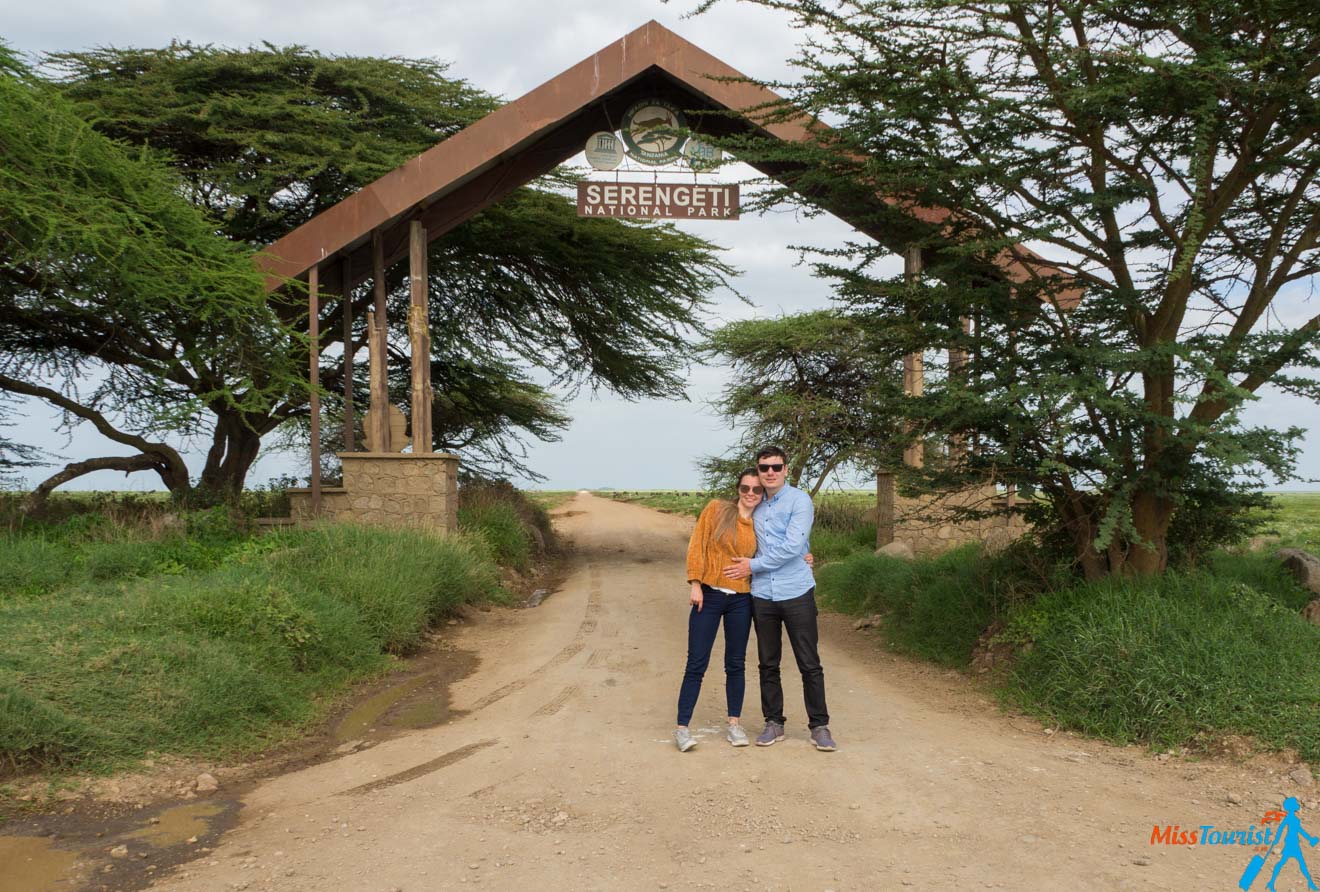
We woke at about 6:30, had breakfast and left for the Serengeti (the road to the Serengeti gate is about 2 hours from Rhino Lodge).
On the way there we saw so many animals again – zebras, antelopes, buffalos, gnus and even some giraffes (it was all part of the Great Migration, a truly spectacular scene!)
I have never ever seen so many animals at once, there were literally tens of thousands of them, really!
If you thought Ngorongoro was big, wait for Serengeti, – it is 15,000 square kilometers and you’d need a couple of months to see it all!
In addition to witnessing the Great Migration, we were extremely lucky to see a leopard very close! So close, in fact, that he looked me in the eye, and that was the highlight of the whole trip for me!
This is how close we were:
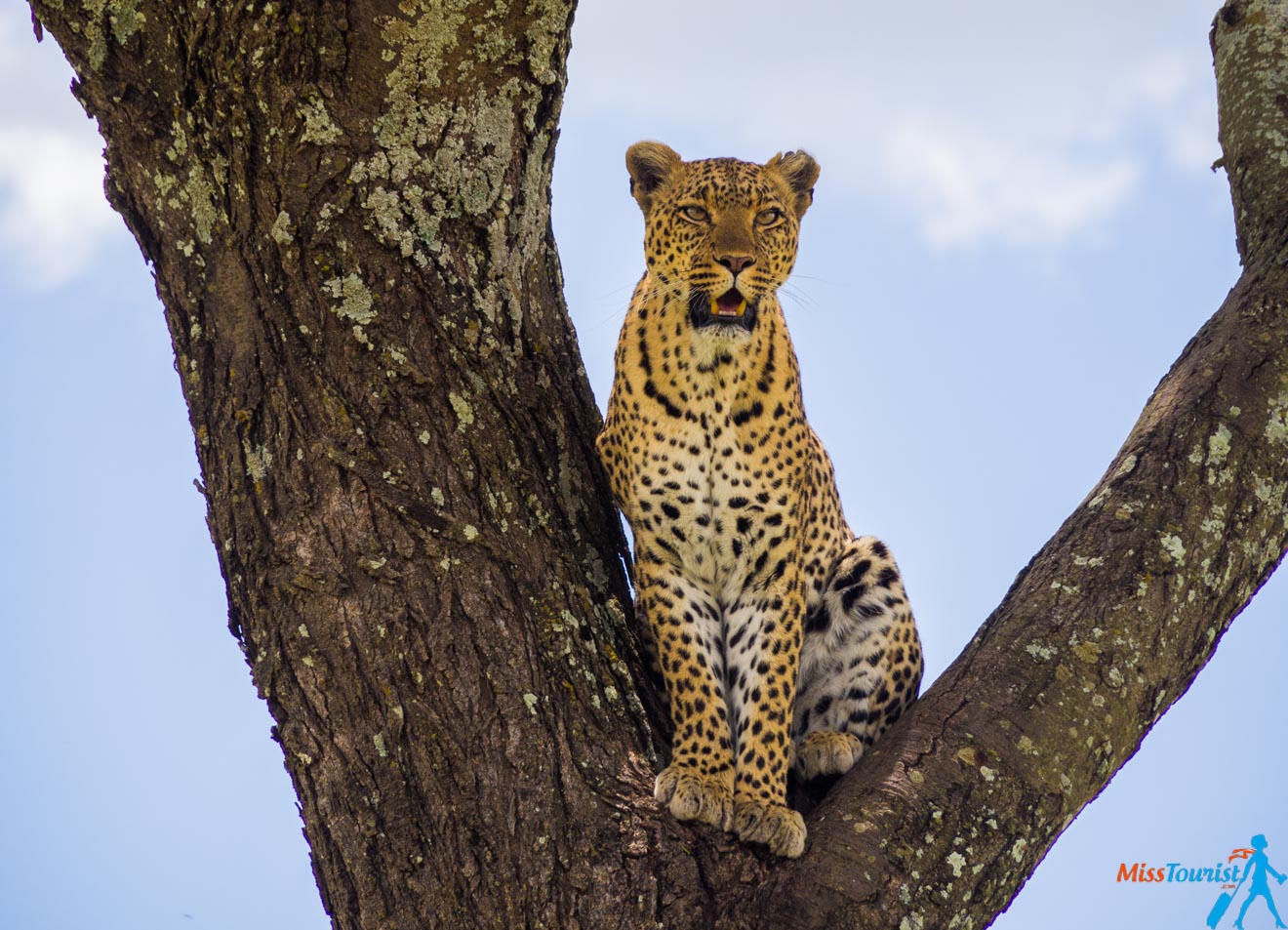
Seeing cheetahs in the wild was one of my dreams so we “hunted” for them but could not find them for a long time. Finally, our driver received some info about recent cheetahs’ locations by radio and we were off! While we were not sure they would still be there when we arrived, (they are the fastest animals on Earth after all!), they were! And we saw them hunting! Trying to hunt actually. They didn’t go further when they understood that the antelopes were too far away and attacking them without being noticed wouldn’t work.
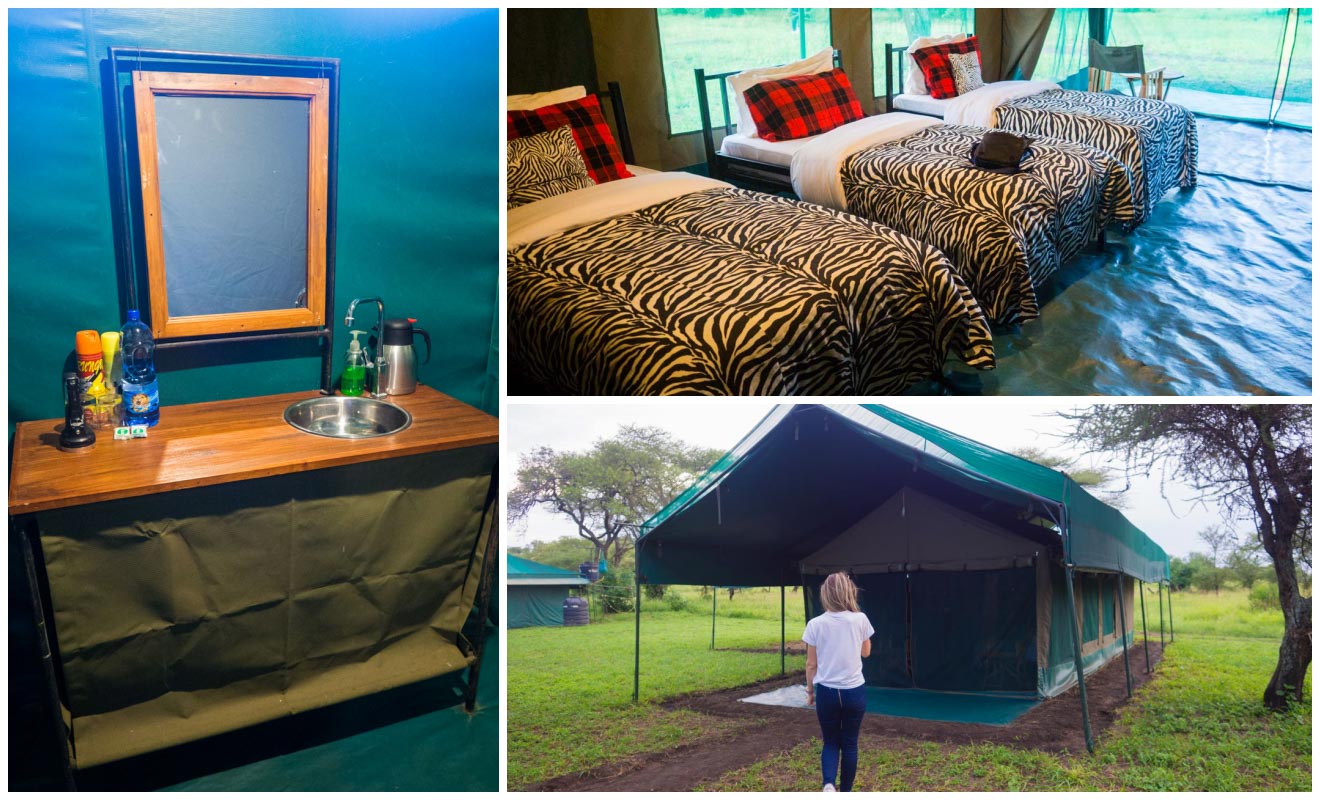
Again, full of emotions, we came to the lodge, and- I regretted we didn’t arrive earlier – this place was magical! It was a tent, but a proper tent that is, in fact, a house with a hot shower, electrical plugs and a couple of rooms!
They have a beautiful fireplace, but we were too tired to enjoy it
During the night, I listened to lions and buffalos along with many other sounds of the savanna!
This tented lodge was absolutely charming, everything was well thought out, and it is worth the money in my opinion.
(I guess I really appreciated a GOOD tent with a proper bed after my 7 day Kilimanjaro hike! 🙂 )
Day 3 – Game drive in Serengeti National Park
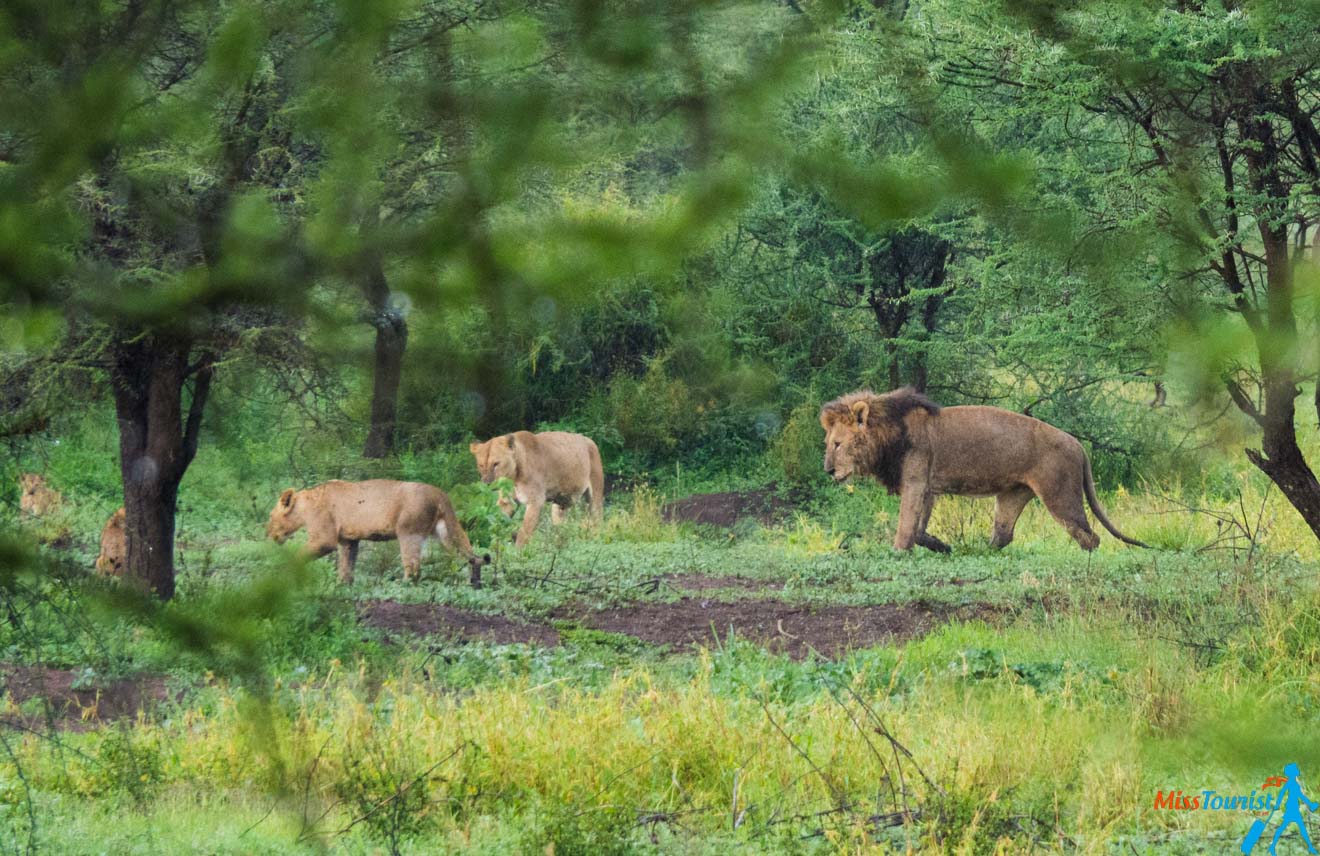
We woke up very early in the morning (around 5:30 am), had breakfast and were off to see some animals we hadn’t seen yet. I really wanted to see more lions as we saw them yesterday from far away lying in the bushes but other than that we saw everything from the Big 5 and much more!
My wish came true – we saw a group of lions up close with 3 cubs playing! They ate a dead hippo. Oh well, that is nature. 🙂
NOTE: Everything changes fast and the next day we didn’t see the migration group as close or as numerous, so don’t take my videos for granted. You might see different things, maybe something even more spectacular? For example, a guy I know saw 2 lions fighting with each other, and they followed the fight for kilometers!
The mission was completed – I had seen all the animals I wanted to see and much more!

After a couple more hours and lunch, we headed back to our hotel in Arusha. On the way back we stopped by the Info Center in Serengeti which was extremely interesting! I learned many things about the story of national parks in Tanzania (for example, there were hardly any animals left until a German colonist came at the end of the 19th century and established natural reserves to protect animals from poachers) and we saw many cute hyraxes!
The road back was through Ngorongoro again for which we had to pay a transfer fee this time. The travel time was about 6 hours altogether. We were back at the hotel just before dinner. The last night was not included in the tour cost in my case, but we booked the same hotel on Booking.com.
The next day we had a flight to Zanzibar, so someone picked us up at 7:00 AM (included in the tour price) and took us to the airport. Our flight was at 10:00 AM from JRO, about a 1-1.5 hour driving depending on the traffic. Note that there are many policemen on the road so the driving is not very fast because they stop you very often (I think we were stopped 5 times!).
The tour operator I can recommend (+ a discount!)
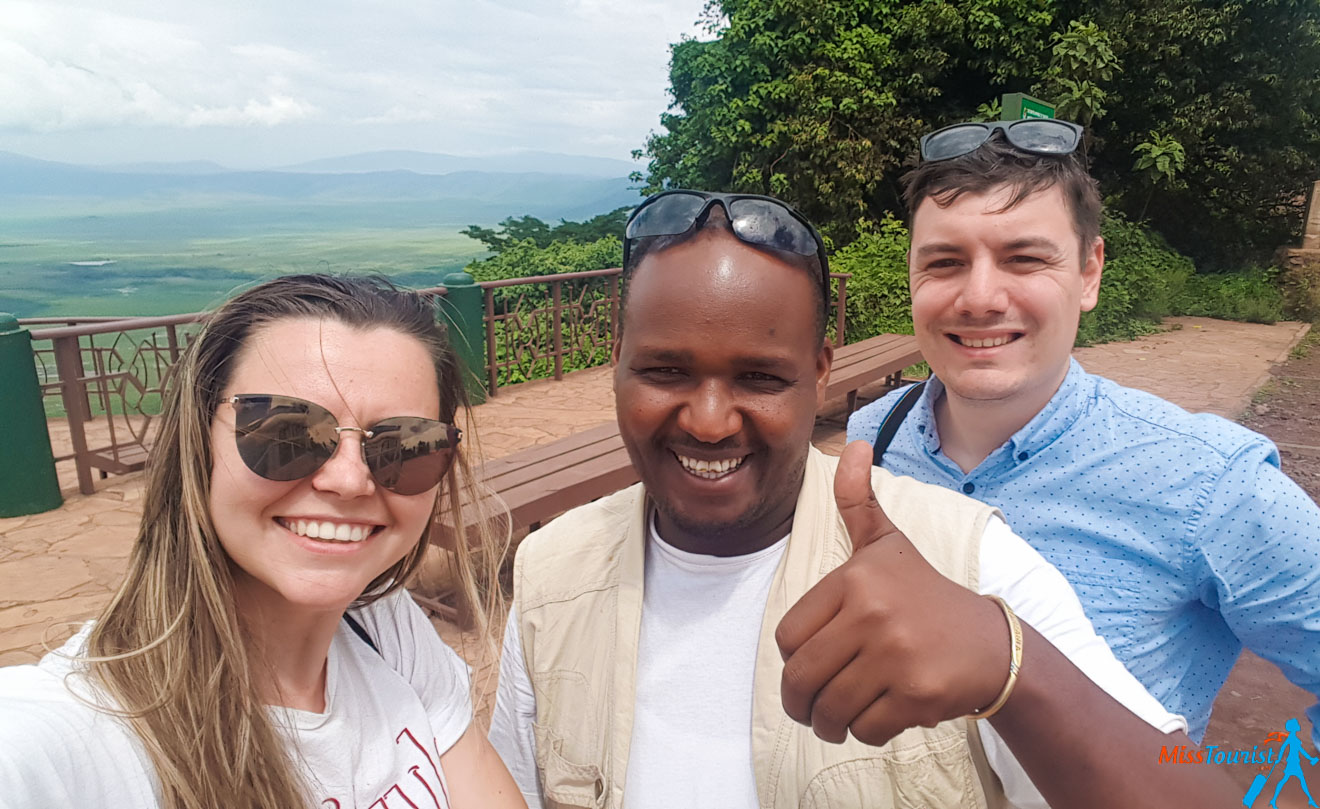
Again, I can vouch for a company called Altezza, they organize both safaris and Kilimanjaro hikes on the highest possible level. I have also negotiated a whopping 5% discount for you to make your decision even easier! The discount is ONLY available for my readers (tsss) and it is the highest the company ever agreed to give. To get it, please write to them directly to this special secret email – [email protected] and request it. As I said earlier, the deal is for my readers only – so if you contacted them directly before and then saw my post, they will not be able to honor the discount.
If you decide to go with the exact route I took, your price will be US $2549 for 2 people plus your 5% discount (so, the total is going to be US$ 2422 with the saving of ~US$130). The truth is, your saving if going to be even more than that because Altezza has really modest prices and I personally paid much more, and that was without any discounts (you are welcome! 🙂 )
Please remember that there are tons of variables that goes into play such as the amount of people and days, the hotels you will be staying in, the actual route (in Altezza they told me that my route is actually not the best it could be as it required a lot of driving, so maybe they will propose something better to you).
A couple of words about choosing your driver:
Our guide and driver knew everything about animals and birds and about their behavior. He’s done safaris for over 15 years in different countries in Africa. He could spot animals from far away and had no problem stopping any place we wanted for as long as we wanted. It was thanks to him we saw the leopard so close; there were about 8-9 more cars, but he managed to find a good spot. He drives efficiently on muddy roads, and that is a huge advantage, trust me! We saw many elephants, a quick view of a leopard, rhinos, hippos, ostriches, many zebras, Thompson gazelles, jackals, buffalos and much, much more!
Some drivers can get stuck on muddy roads so tourists spend 6 hours waiting in the car for help and that’s why an experienced driver is important. Our driver said that he prefers not to take small roads after it rains because it might cause too many problems.
I remember he was ready to wake up earlier if needed and he knew so many people in the parks.
So, your guide needs to have vast experience because he needs to know all the roads in the national park you are going to. If he doesn’t know the closest way to get to an animal, the opportunity will be missed. I am sure the guys in Altezza only have qualified super experienced drivers-guides, but if you decide to go for a small lesser-known company, this is something to be aware about (maybe, ask your contact person who will be your guide and how many years of experience he has).
REMINDER: Altezza, a company with a lot of experience organizing awesome safaris and Kili hikes, is offering a 5% discount, the highest discount you could ever get, to my readers! If you want to grab one too, please drop them a line and mention the discount RIGHT AWAY – [email protected]!
Other practical information about Tanzanian Safaris
Lodges in Tanzania during your safari
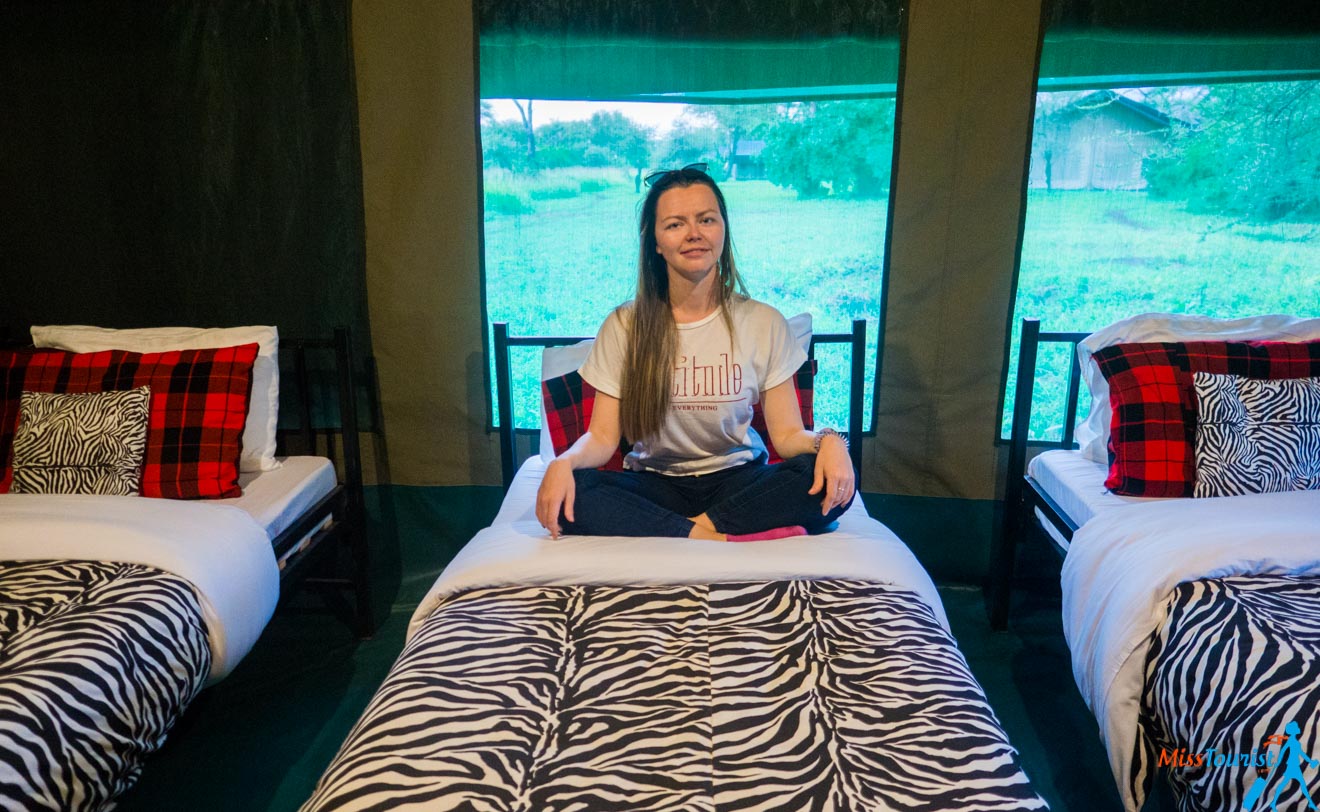
Accommodation options are varied – you can find anything from bush tents to luxury tented lodges with hot water and Wi-Fi.
As I said earlier, if you want to go independently, it is possible to individually book some of the lodges but it might be more expensive because tour operators can get special deals.
If you find a lodge that is much cheaper than the rest, check where it is located. Trust me, you don’t want to spend an extra 2 hours driving just to get to the park. That is time you could have spent enjoying your safari!
Here are the accommodation options:
Camping
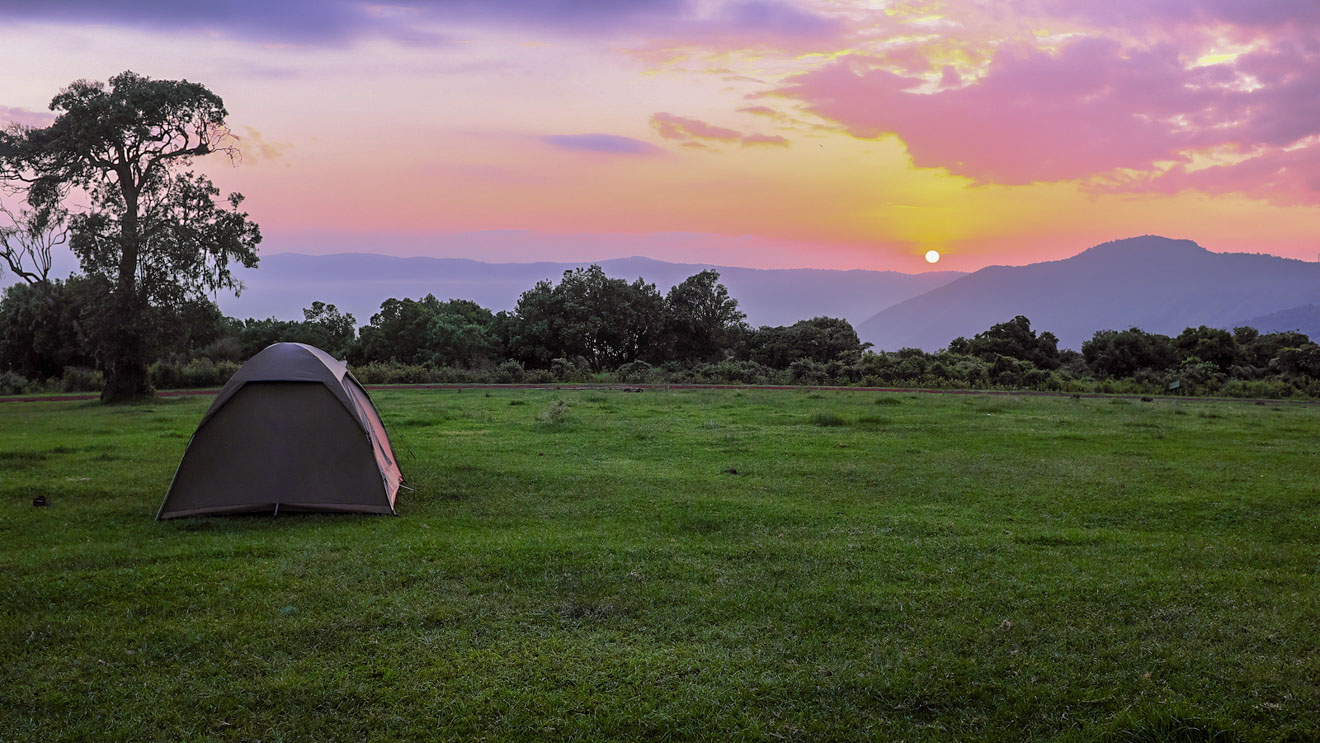
You will be staying in a simple tent, but usually, there will be a cook who will take care of your food for the whole duration of the safari. All the camping equipment such as a tent and a sleeping bag will be provided by the company.
Price: around US $30/tent per day
Budget Lodges
They are usually located outside of the national parks so you will need quite some time to drive to the entrance in the morning. Nothing fancy, but you will have a bed and a roof over your head.
Price: from US $100
Tented Camps
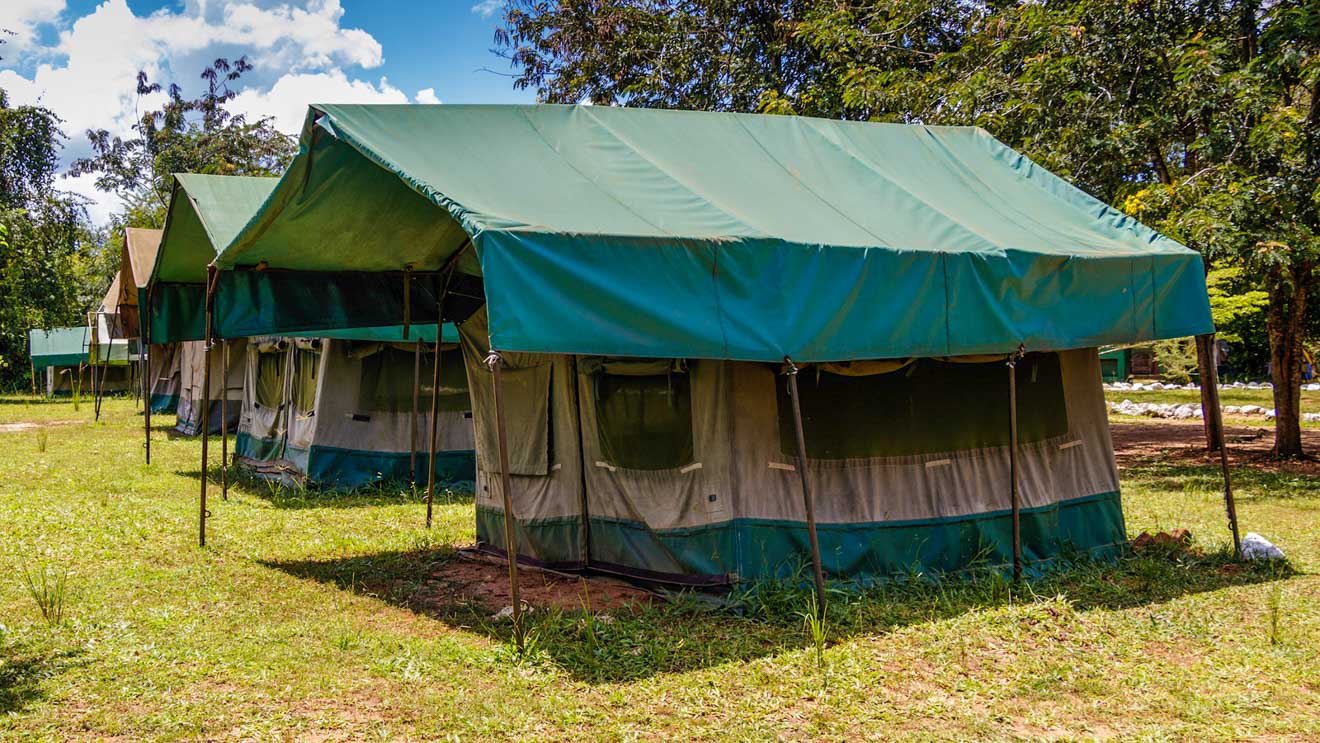
I stayed in one of these and even if it still wasn’t the most luxurious of them all, I can say that it was an ultimate safari experience! You will have hot water, a deliciously prepared dinner, usually a fireplace and maybe even a pool.
Price: from US $200
Standard Lodges
I stayed in one of these as well and it was a great experience! The only difference between it and a Tented Camp is that there is a proper roof and proper walls (but the tented ones are more than enough, too, even with the wind, believe me, it doesn’t move much!).
Price: from US $400
Luxury Lodges and Luxury Tented Camps
If you want to have an ultimate safari experience and money is not a problem, this will be a once in a lifetime experience! Just one note – if you choose this option, you might as well stay for the whole day to enjoy the property and the wildlife around it to the fullest!
Price: around US $1,000/night
What is The Big 5?
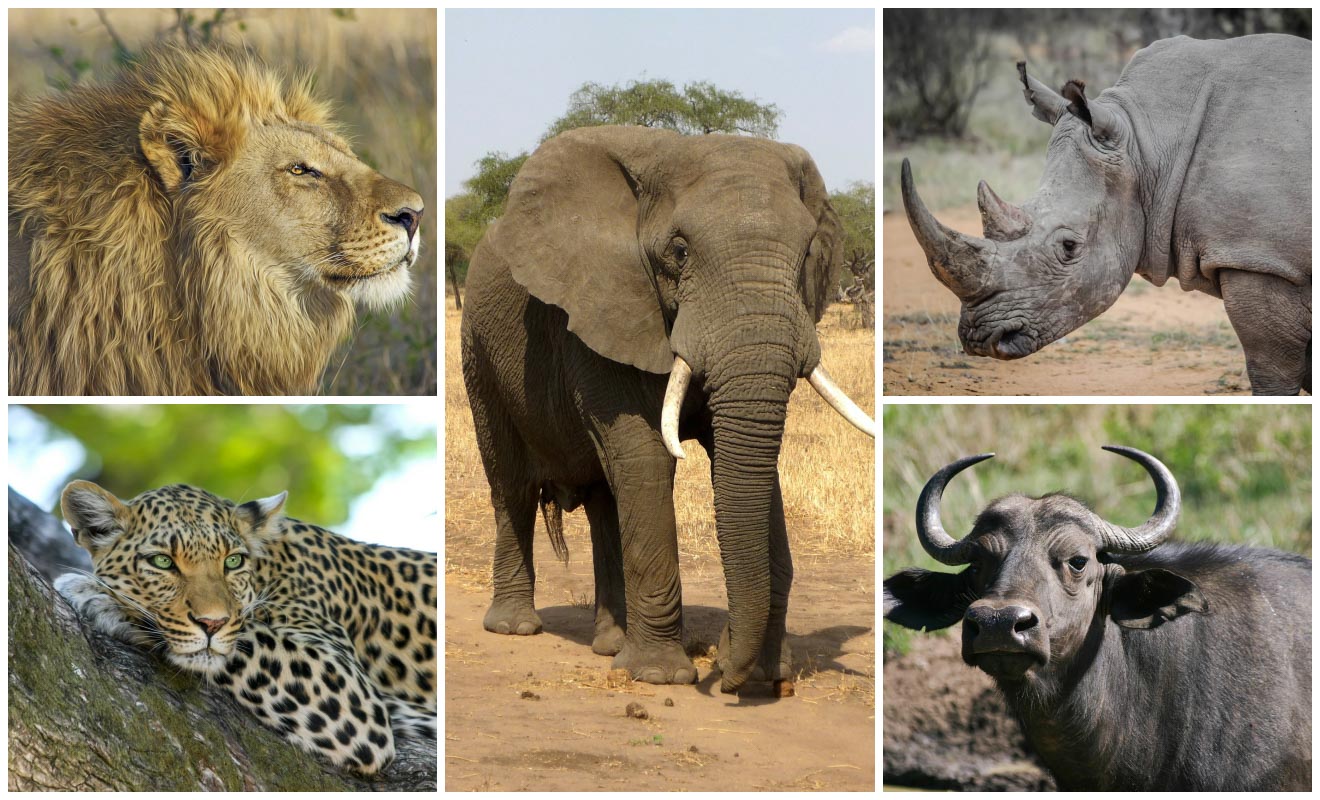
These are the 5 most difficult and dangerous animals that were hunted in Africa. Note the term is widely used by safari tour operators:
- Leopard
- Rhinoceros
- Cape Buffalo
- Lion
- Elephant
Besides these animals, you will also see wildebeests and zebras (maaaaany!), giraffes, hippos, many kinds of birds, some primates, and possibly crocodiles (this is the only animal we missed out on!).
Are there other National Parks worth visiting in Tanzania?
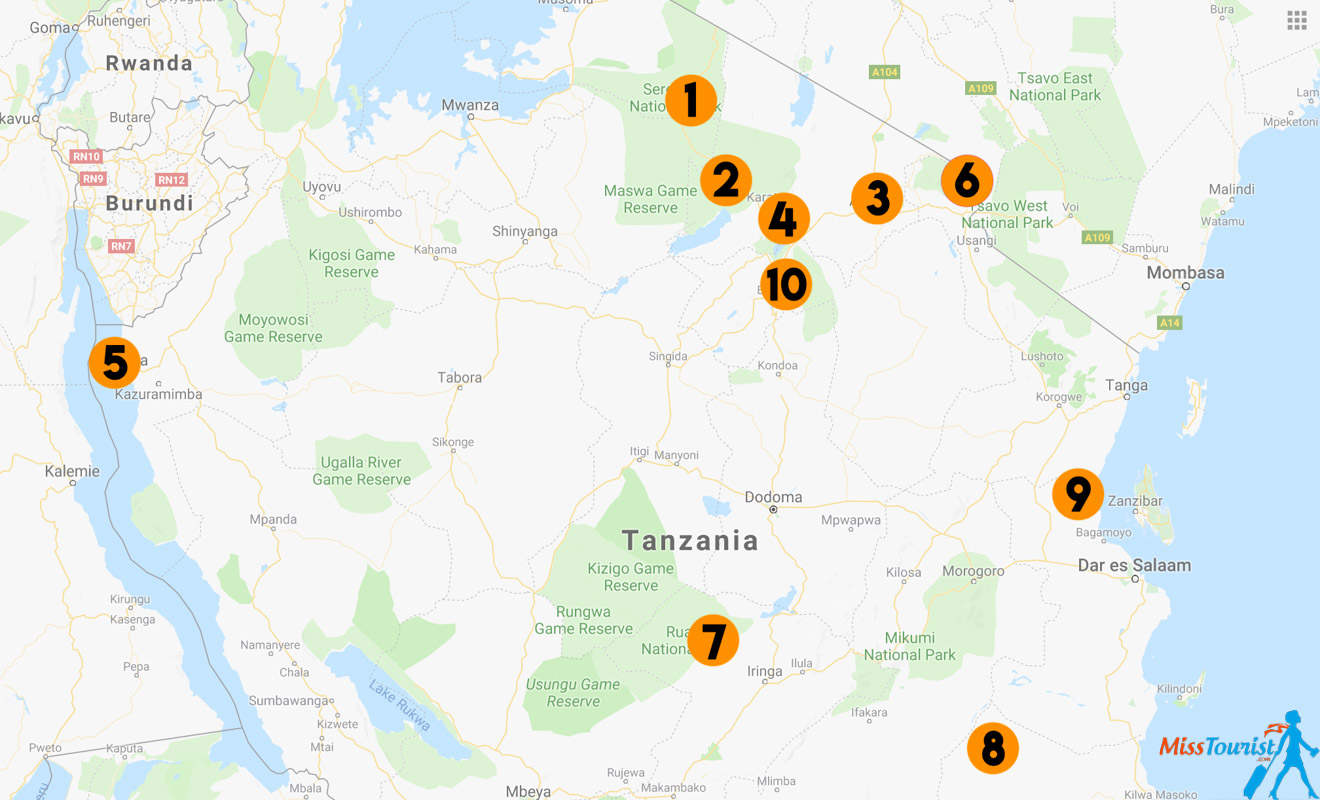
Yes, definitely! If you have more time, you can easily organize a 7-day safari or even a 2-week one! Here are the TOP 10 national parks and reserves in Tanzania:
- Serengeti National Park
- Ngorongoro conservation area
- Arusha National Park
- Lake Manyara National Park
- Gombe Stream National Park
- Kilimanjaro National Park
- Ruaha National Park
- Selous Game Reserve
- Saadani National Park
- Tarangire National Park
What about multi-country safaris?
Yes, you can visit neighboring Kenya though they have very similar animals, Rwanda to see gorillas and chimpanzees, Uganda again for gorillas and chimpanzees but a bit more affordable than the latter. Keep in mind that Rwanda and Uganda are still not as safe as Tanzania.
Safari rules and etiquette
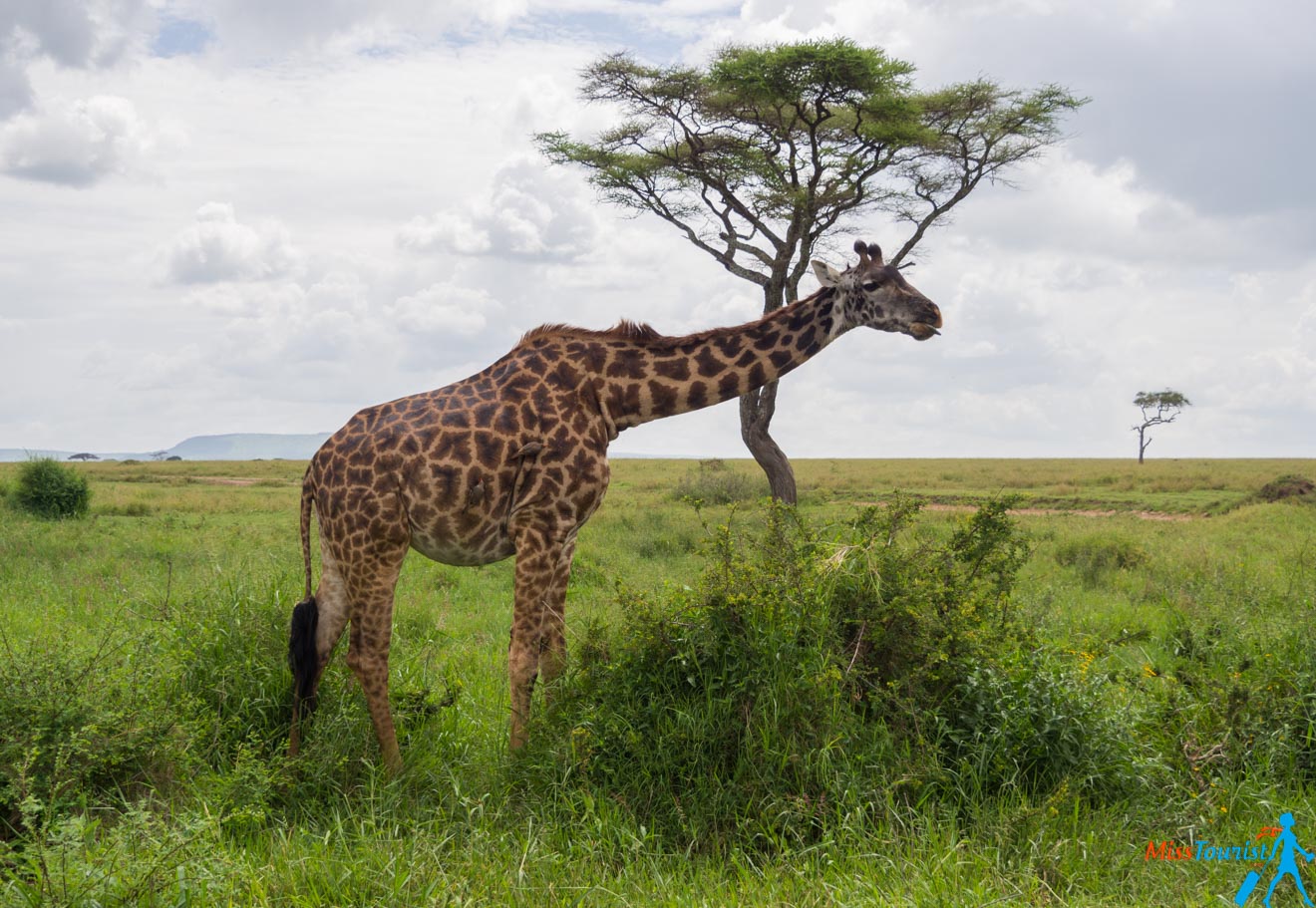
Here are some rules for behavior on a safari that are primarily there to keep you safe, so please respect them.
- Except for the designated eating areas, stay in the car at all times. It is not only dangerous but might get your guide in trouble because there are rangers constantly monitoring the area with binoculars (at least so I have been told).
- Be considerate of the animals. Do not yell- this might scare them away or make them angry, and it is definitely the last thing you want to do! Listen to what your guide says. Remember, you are a guest there, the animals have been living there for longer than we can imagine.
- “Trash in, Trash out” – no pollution in the park, please do not litter.
- Be very careful when eating outside. There are eagles that can steal your food in no time and also sparrow-like little birds. One of them attacked my donut even as I was eating it in the car. The management of the park does not encourage feeding birds let alone other animals because this is a national park and they should know how to find their own food.

- Do not be shy about asking your driver to stop somewhere. It might be that he didn’t see something that you did, or if you want to take an extra picture of an animal, he will gladly wait. Don’t be afraid to ask.
- It might happen that you won’t see animals right away so you just need to be patient. I promise, your efforts will pay off in the end. They can’t hide for long! Also, having a clear list of what you want to see might help – your driver will then know what you are most interested in and will take you to the places those animals are most likely to be seen (they know the places!).
- Don’t forget to tip your guide. The tips are not as high as compared to Kilimanjaro, and, if you think your driver did a great job, give back! The generally accepted tip is about US $20 per day for a driver. If you have other members of the team like a cook or another separate guide, it is about US $10-$15 per day from the whole group.
I have only one day to see the animals, is it possible?

Your wish is my command, said the local companies and now they also have full-day safari tours. This one is to Ngorongoro crater, but there is also one to Tarangire
Can you take a safari in Zanzibar?
Not really. Zanzibar does not have the variety of animals that the national parks on the mainland can offer, but you can fly to a national park from there! They are called fly-in safaris. There is a small airport in the Serengeti, or you could fly to Arusha just like I did. For example, here is a 6-day fly-in safari starting from Arusha or an 8-day luxury flying safari.
By the way, I totally recommend extending your trip and visiting Zanzibar. It is a fantastic island with so much to discover! Read my post about Things To Do in Zanzibar here!
Don’t forget that travel insurance!
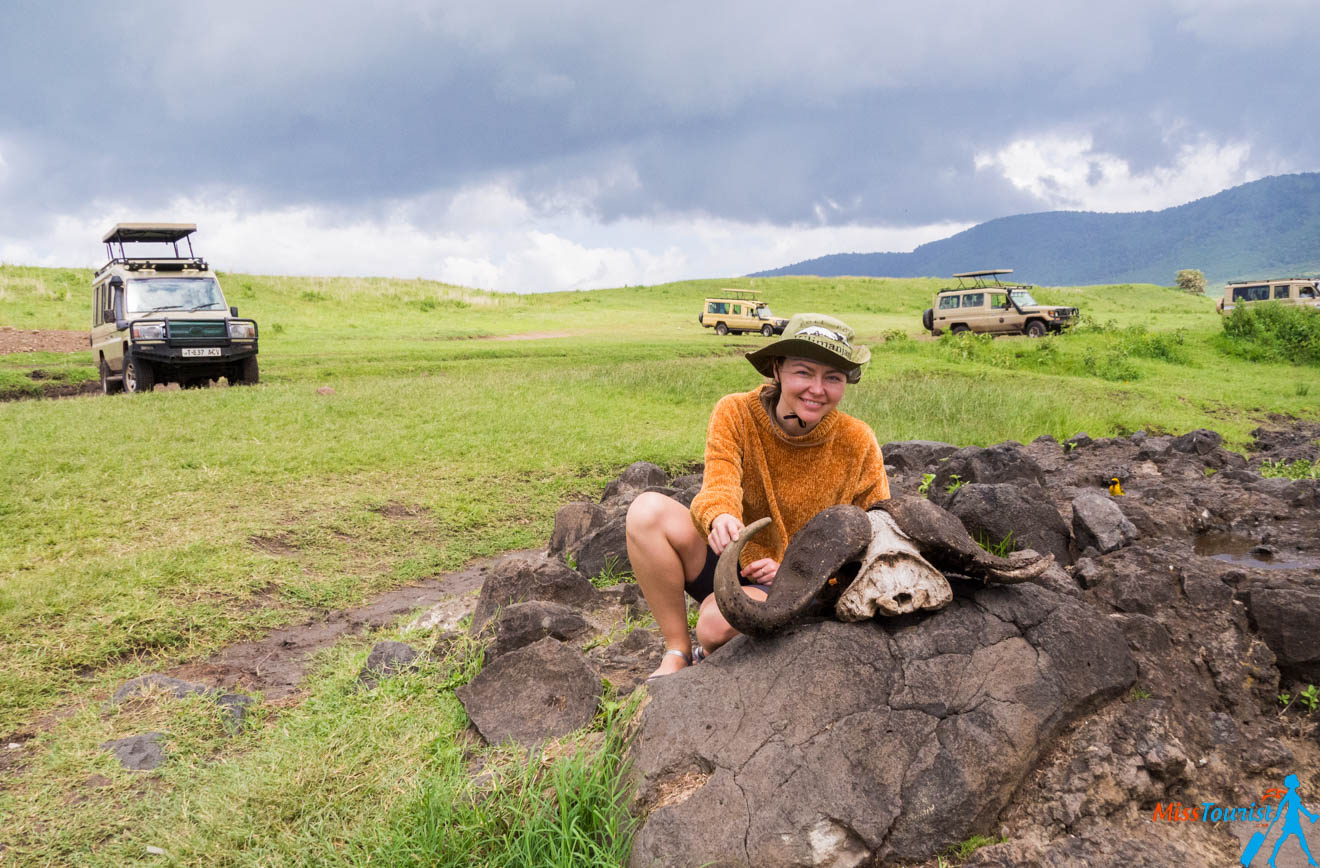
When going somewhere that exotic, I would highly recommend getting the extra insurance on top of the regular insurance you might already have. Insurance from World Nomads will cost you about US $70 for a 2- week trip to Tanzania and it covers trip cancellation costs, medical expenses, emergencies, baggage damage and delays and much more. Get the quote here.
UPDATE: Find out more details about the advantages of having travel insurance and how to choose the best one for you by reading this article!
NOTE: It is important to use a legally registered tour operator, otherwise you might have trouble getting paid by the insurance company if there is an accident (I am quite sure everything will be completely OK, but I always have travel insurance with me just in case!).
Visa to Tanzania
EU citizens do not need to pay for a visa, you can receive it for free on arrival!
If you are from the USA, it is US$100 per person; a single or multiple entry visa is the same price. You can pay for your visa on arrival, no need to make any prior arrangements.
For most other countries you pay US$50 for the visa on arrival (I am Russian and this is how much I paid too). Prepare to have some cash with you, but there is also the possibility to pay with a credit card at one of the windows (ask and they will direct you to the correct one).
Is it safe to go on a safari in Tanzania?

The jeeps’ roofs, even if they exist, are open, so theoretically, cheetahs or lions or some other animal can actually attack you (theoretically!). But have no fear, they have completely NO interest in you. They see jeeps as a big animal that they cannot eat. They are completely not interested in humans and moreover, sometimes they are scared of us (for good reason since unfortunately there are still many poachers in the area 🙂 ).
Also, my guide told me that cheetahs are very curious creatures and they can sometimes jump on the jeep just because they are interested in humans, but they mean no harm at all. That actually would be really cool, wouldn’t it?
Is Tanzania safe?
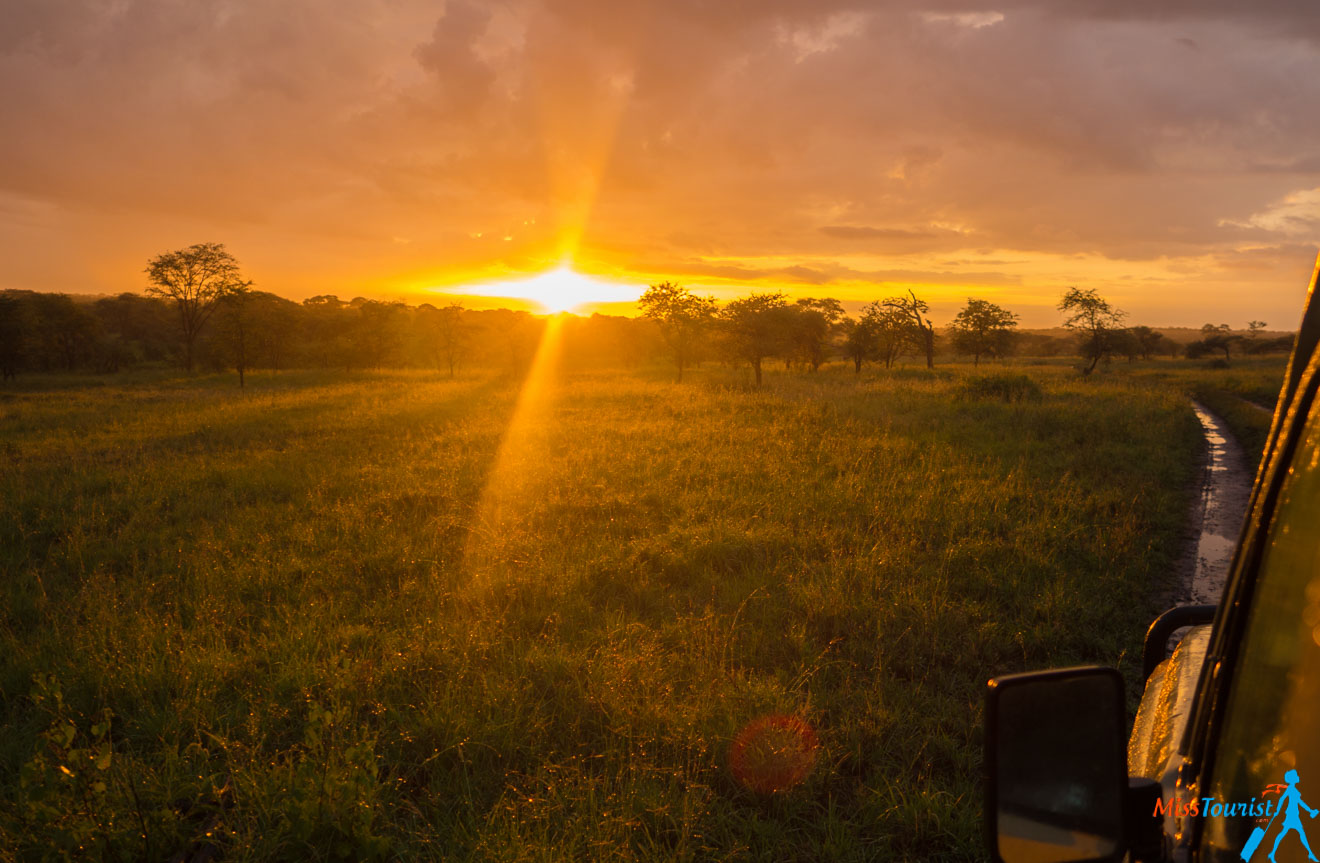
I had only very positive experiences in Tanzania where people were nothing but extremely hospitable to me, so I would say it is a very safe country! But here I want to say a couple of words about general safety tips because it is still a poor country. Locals are used to the fact that tourists are “money bags” and many will try to use the opportunity to get some cash from you in the form of tips.
People are really helpful but they expect tips in return. If you are not ready to pay, just politely refuse their help right away. If you do not mind tipping them, 5000-10000 TZS (US$2-$4) is a good amount to pay for someone who helped you find your way etc.
And some common sense safety tips – do not walk in non-touristy districts late at night and don’t use unofficial taxis. Double check your change because tricking tourists on currency exchanges is a pretty popular scheme (you pay in USD, they give you change in shillings, but much less than they were supposed to). Don’t be ashamed to use a calculator if you are not sure you got the right change.
All in all, it is a pretty safe country. I had no issues at all, but, like in any country in the world, using common sense will help you stay out of trouble at all times.
Can you combine a Tanzanian Safari and a Kilimanjaro hike?
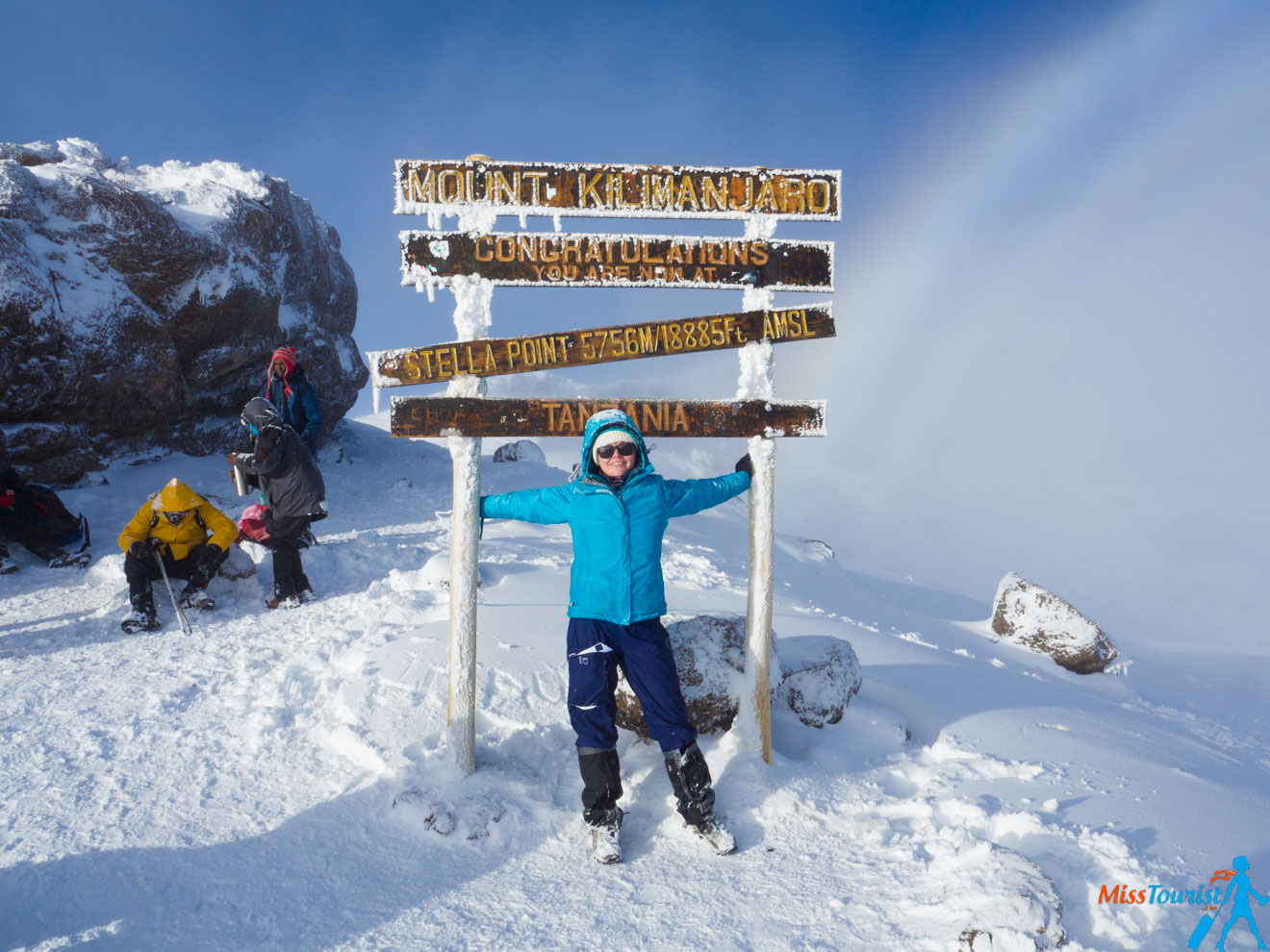
Yes, it is possible to get a tour like that or arrange it by yourself! In fact, there are many tourists who want to do this, me included. I highly recommend first climbing Kilimanjaro and then enjoying the jeep safari as a reward to yourself.
This can easily be done with Altezza, for example, or one of many others; most of them will be able to arrange it. The advantage of using the same company is that transportation from Kilimanjaro to the safari will be included as well as a hotel night in between them. Aaaand, you won’t need to organize it all by yourself!
We paid about US $2000 per person for a Kilimanjaro hike (7 days, Machame route) plus US $1200 per person for a 3-day safari. If I had had someone negotiating a discount for me back then, we would have saved US $450, not bad at all, right?
(You can get your 5% discount for both tours by writing them an email to [email protected] – special one only for my readers, the managers are aware of the conditions).
What about a combination of a Tanzanian safari + a beach holiday in Zanzibar?
Nothing can be easier! In my case, I had organized it myself (just bought the flight from Arusha and booked a hotel in Zanzibar by myself), but if you would like to have it taken care of for you, you can book this package for example.
P.S. I know that many honeymooners choose this option and I think it is an absolutely wonderful choice -you will have the time of your life there!
Conclusion
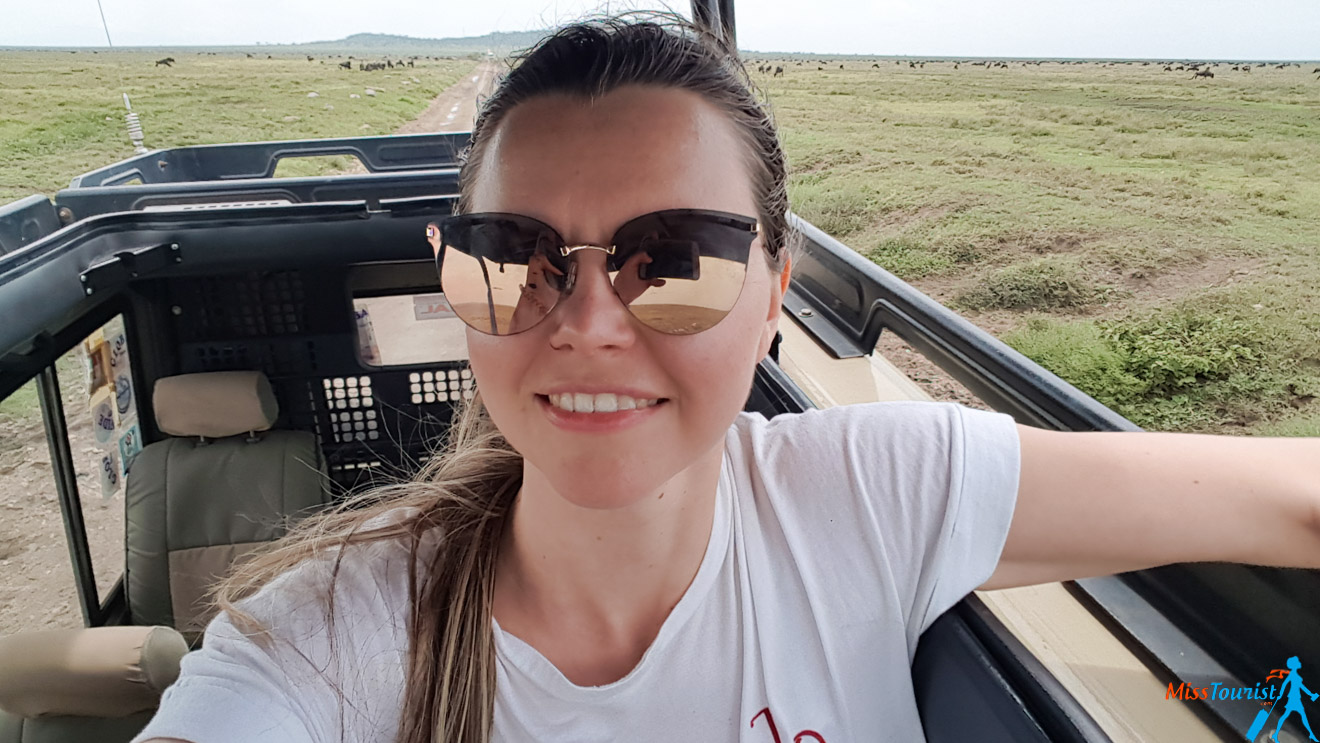
Thank you for reading this huge article, I hope my post shed some light on how safaris are done in Africa and that now it will be easier to choose the one that is right for you.
No matter how many times you see it in pictures or videos, your first close encounter with wild animals will be unforgettable! I will never forget staring in awe at a leopard who was looking back at me. Or an elephant who just crossed the road right in front of our jeep literally 5 seconds into the park. I will cherish these memories for a long time!
Ask your guide questions and you will learn so much about the animals!
Talking about questions, you can also ask me anything below in the comments section if you need more information!
Good luck and I hope you will make this dream trip happen!
Yulia
Pin it for later!
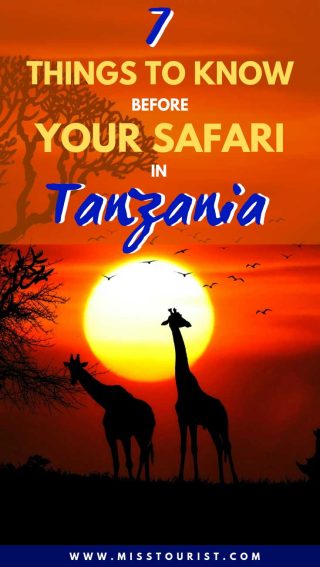
Pin it for later!
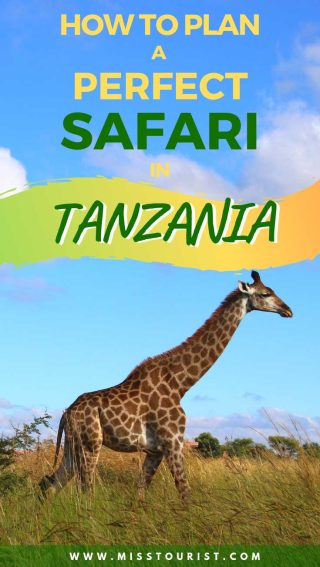

 Yulia Saf
Yulia Saf 






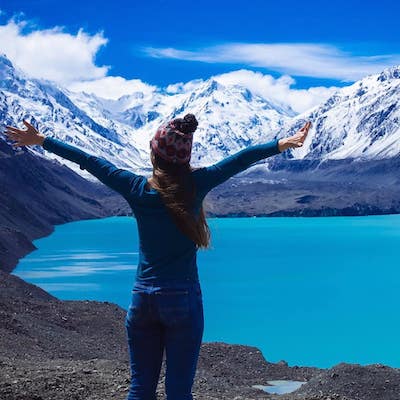
Hi! This is very helpful information! You saved ma about hours worth of google search. 🙂
I have a question though, some lodges already include game drives. Wouldn’t it be cheaper that way to just book a lodge yourself?
Thanks!
Hi Renee,
I do not know if it will be cheaper – it depends on tons of factors – where are you going, for how long, what type of accommodation, what park, private or group etc etc. Most probably, if you are going to stay in one lodge, you are only going to see the area around it (as you need to go back there before dark to sleep). If you are fine discovering only 1 place and the price seems reasonable, it might be a great solution then! 🙂
Jambo !.Thank you so much Miss Yulia. You real tell the nations about the world hiding in Tanzania.
Great content too. Everything written in this content is 100% pure and true about this tourist destination.
May i add a little bit about Masai in Tanzania and the bushmen of lake eyasi located between Ngorongoro crater, lake Manyara and Tarangire national park before you get Serengeti. Am speaking of Hadzabe and Datoga tribes men who are living inside the bushes, hunting and eating the raw meat from wild animals such as monkeys, dick dick, impala …These tribesmen are also iron makers!.
Few weeks ago Tanzania got 7th president and the 1st female president who real care about international travellers and global situation.
After the rough years with Covd19 now we are open for tourism without quarantine regulations.
We welcoming the 2021 international summer travellers.
Hakuna matata!.
Hi Gudluck, thank you for your nice words!
I also hope there will be many more tourists coming to Tanzania soon!
Hakina matata! 🙂
Thanks a lot Yulia, you are giving us a very useful tip and information for our very soon trip(one week from now) to Arusha and Zanzibar.
Thanks again.
Julian and Nancy
have a great trip guys! 🙂
such a thorough post and filled with very useful information. I’m curious, when did you make this trip? trying to figure out how recent the info would be. also, had you done other extensive mountain climbs/treks? this last part is crucial for me and it would be great if you offered some insight. I realize it’s a very individual experience. I’ve trekked in the Peruvian & Ecuadorian Andes (Winikunka / Machu Picchu), then Cotopaxi (though only to the Jose Rivas Refuge area). these trips were taken 9 months apart and I absolutely suffered from altitude sickness. thanks in advance for all the info.
Hi Lola! I went about 1,5 years ago (January 2019)
In terms of trekking, not sure if you are asking about Kilimanjaro hike?
I have written about it in details (including the preparation , packing list and the actual day-by-day experience), please see all the post about it here
Hi, this is very useful information!
However, I would recommend climbing Kilimanjaro after the safari in order to get acclimatized.
Thank you!
True, that’s good advice!
Love this article, very informative! Would love to get the 5% discount code for Altezza too 🙂 I dropped you a message too.
Thanks!
Hello,
Thank you so much! Yes, just write them an email to [email protected], the managers know, this is a special email and they will give you 5% off by default.
Everything should be working fine, but do not hesitate to let me know (by email or here in the comments) if you have any questions!
Amazing article, very well researched, thank you so much, I can really see you spent quite some time writing it for us!
Thank you TOgel!
Yes, in fact this is the longest piece I have on the site so far, I really got inspired and wanted to share all the related info with you guys! 🙂